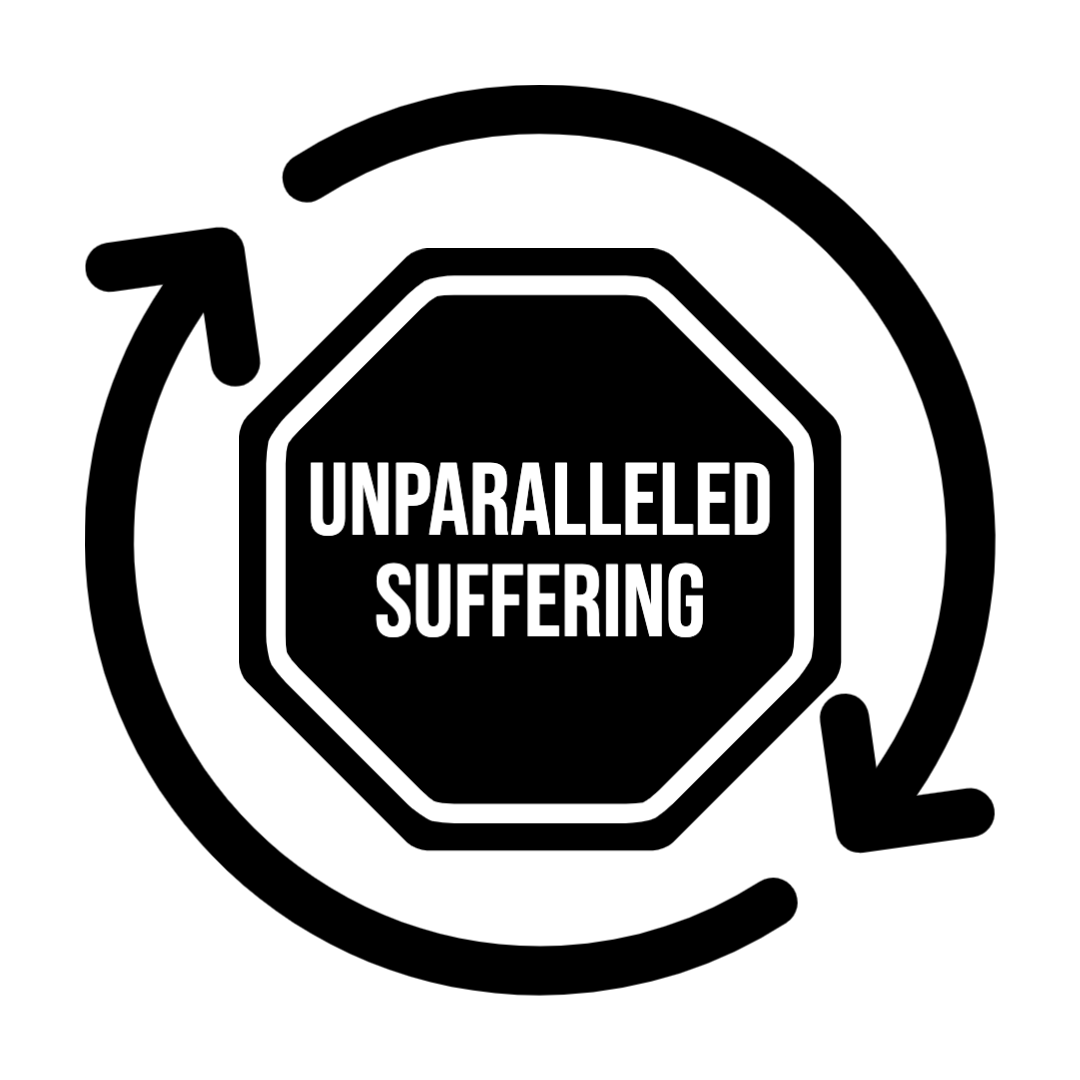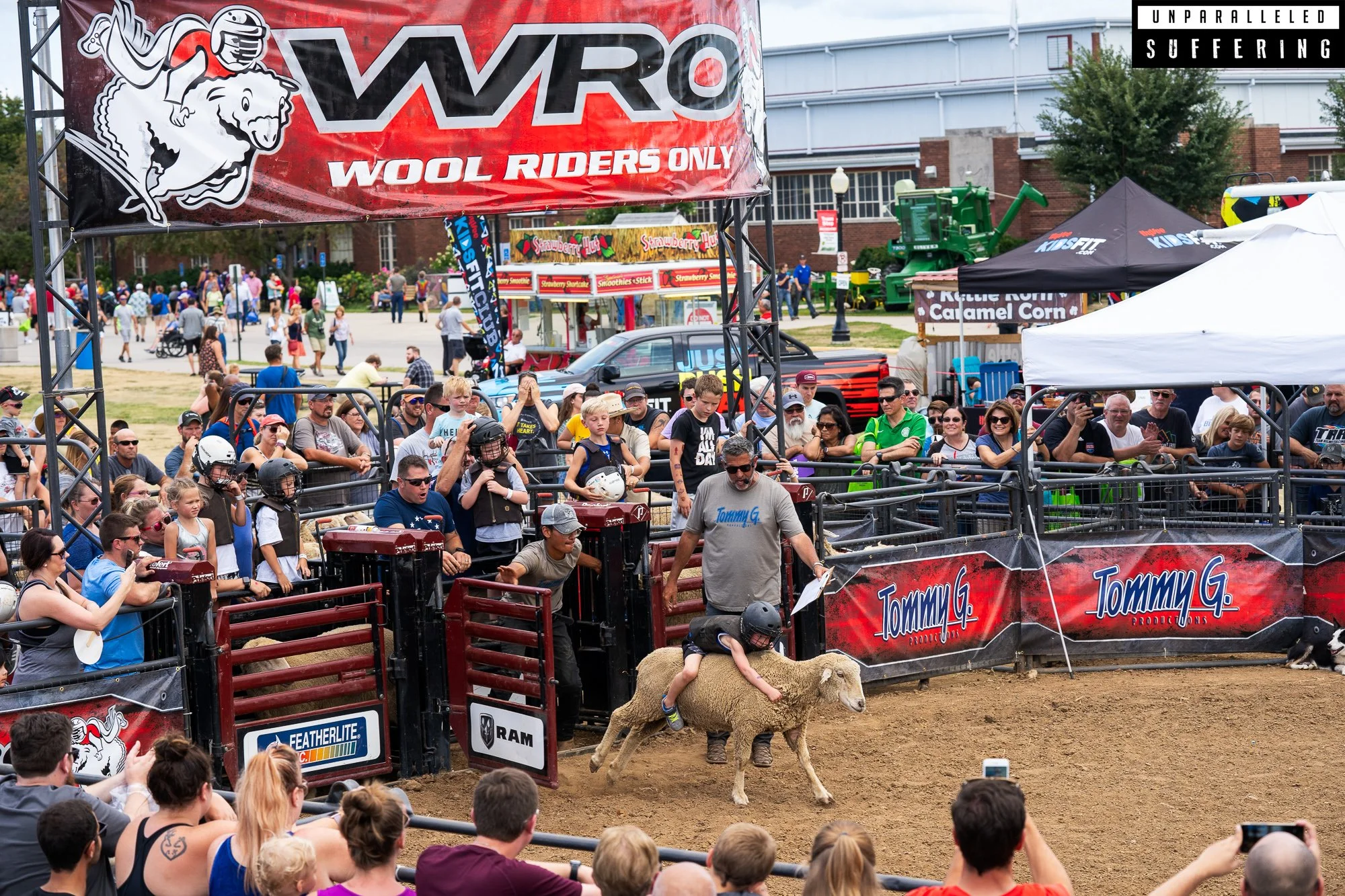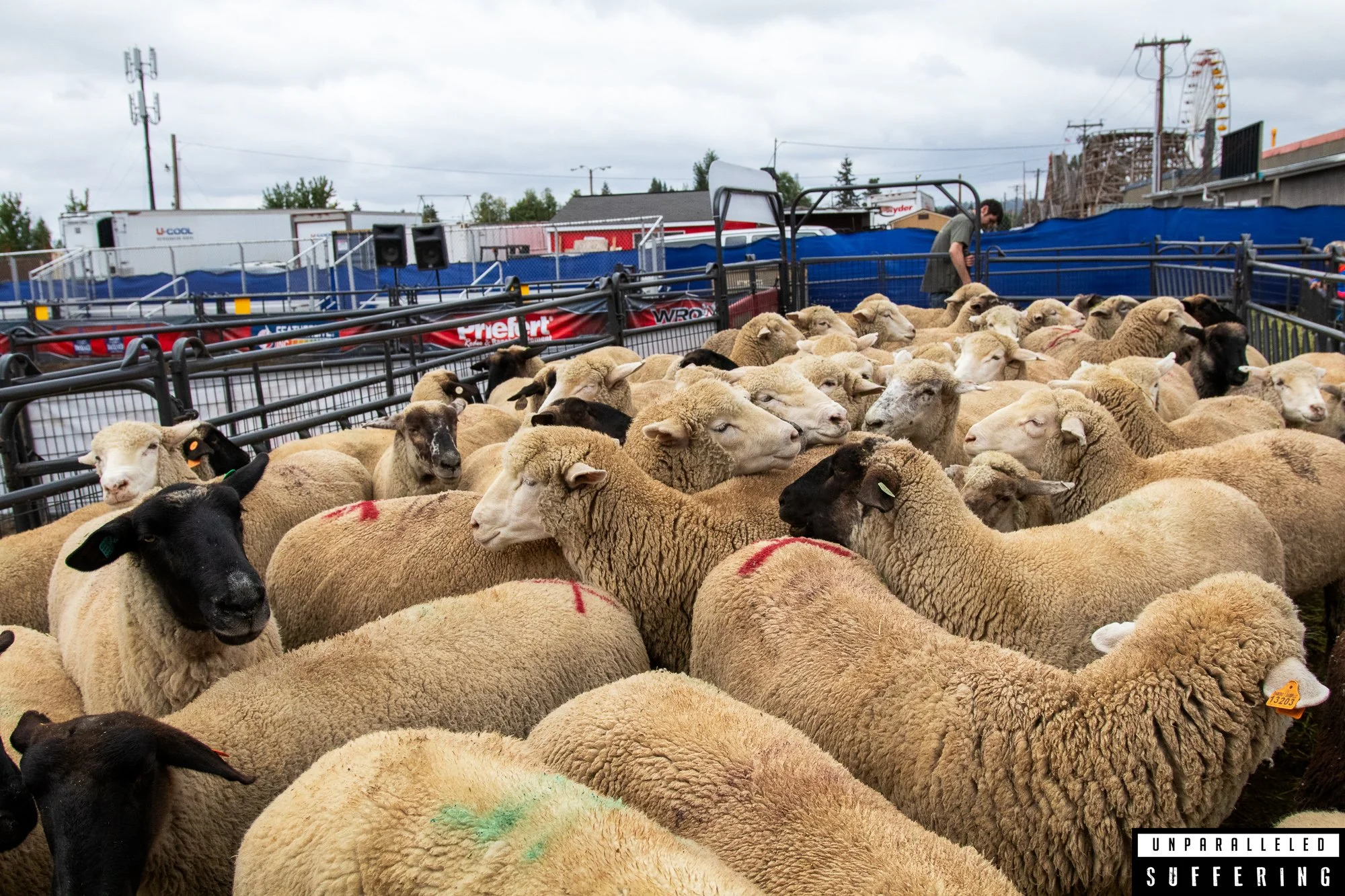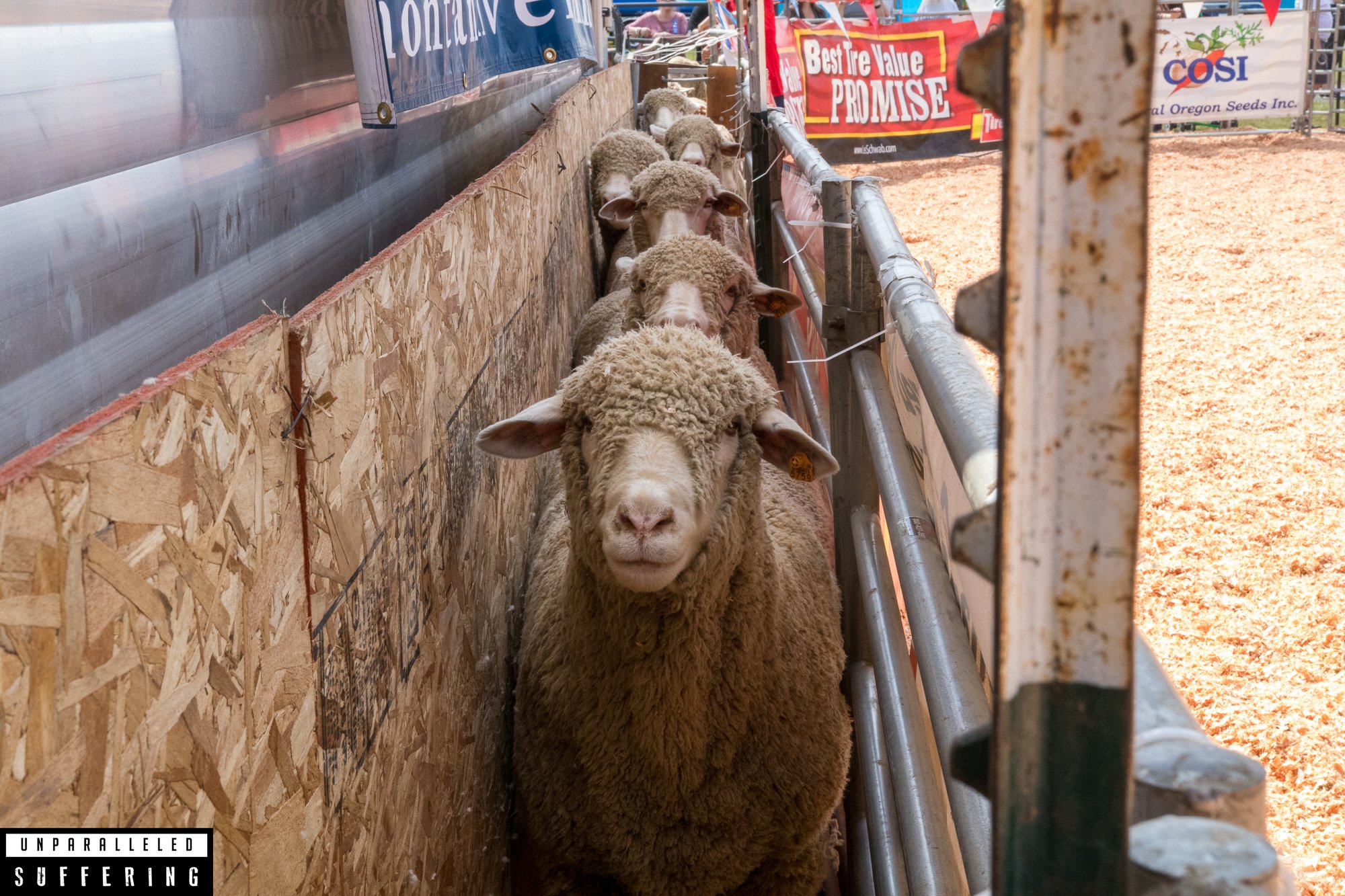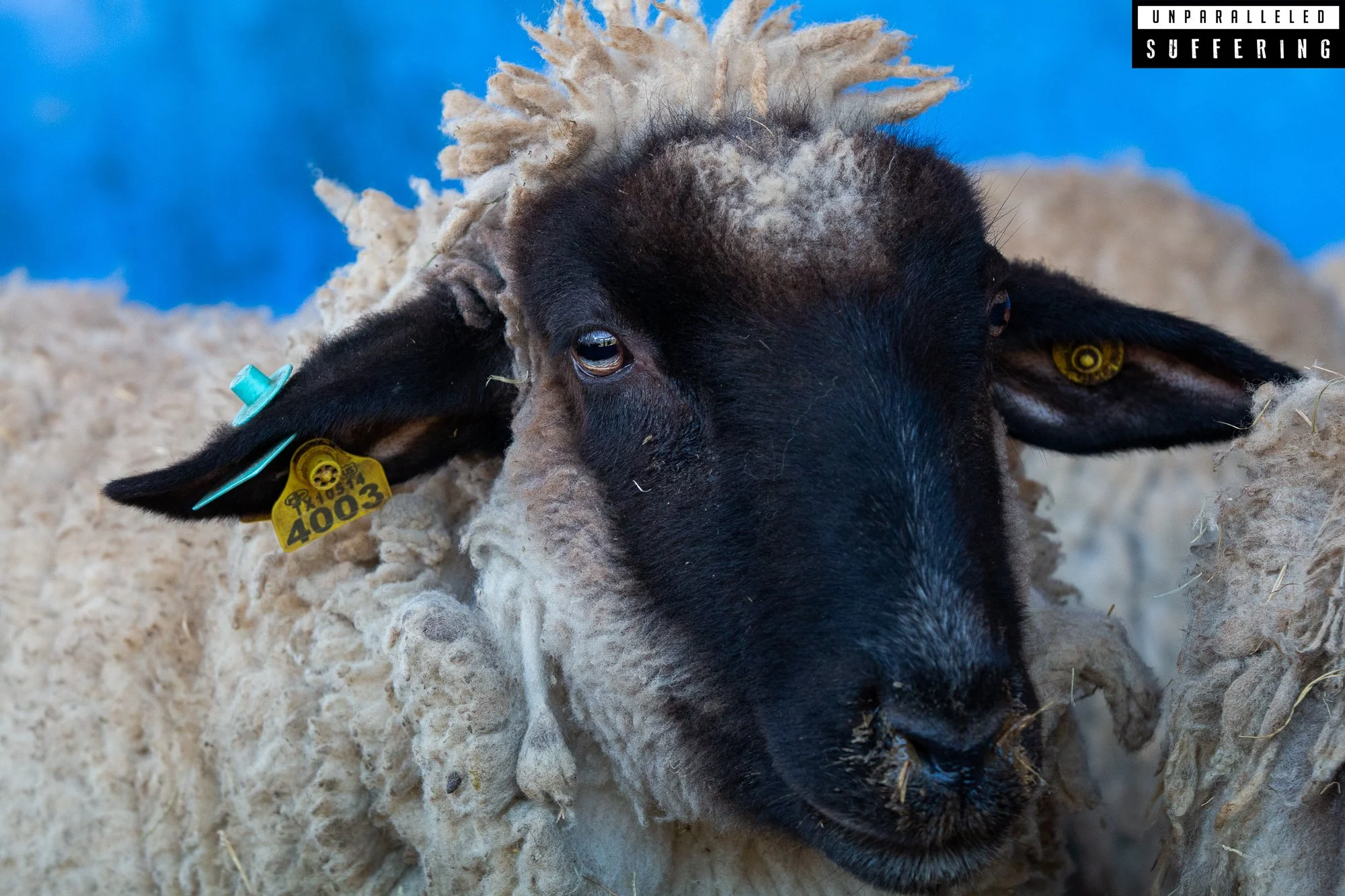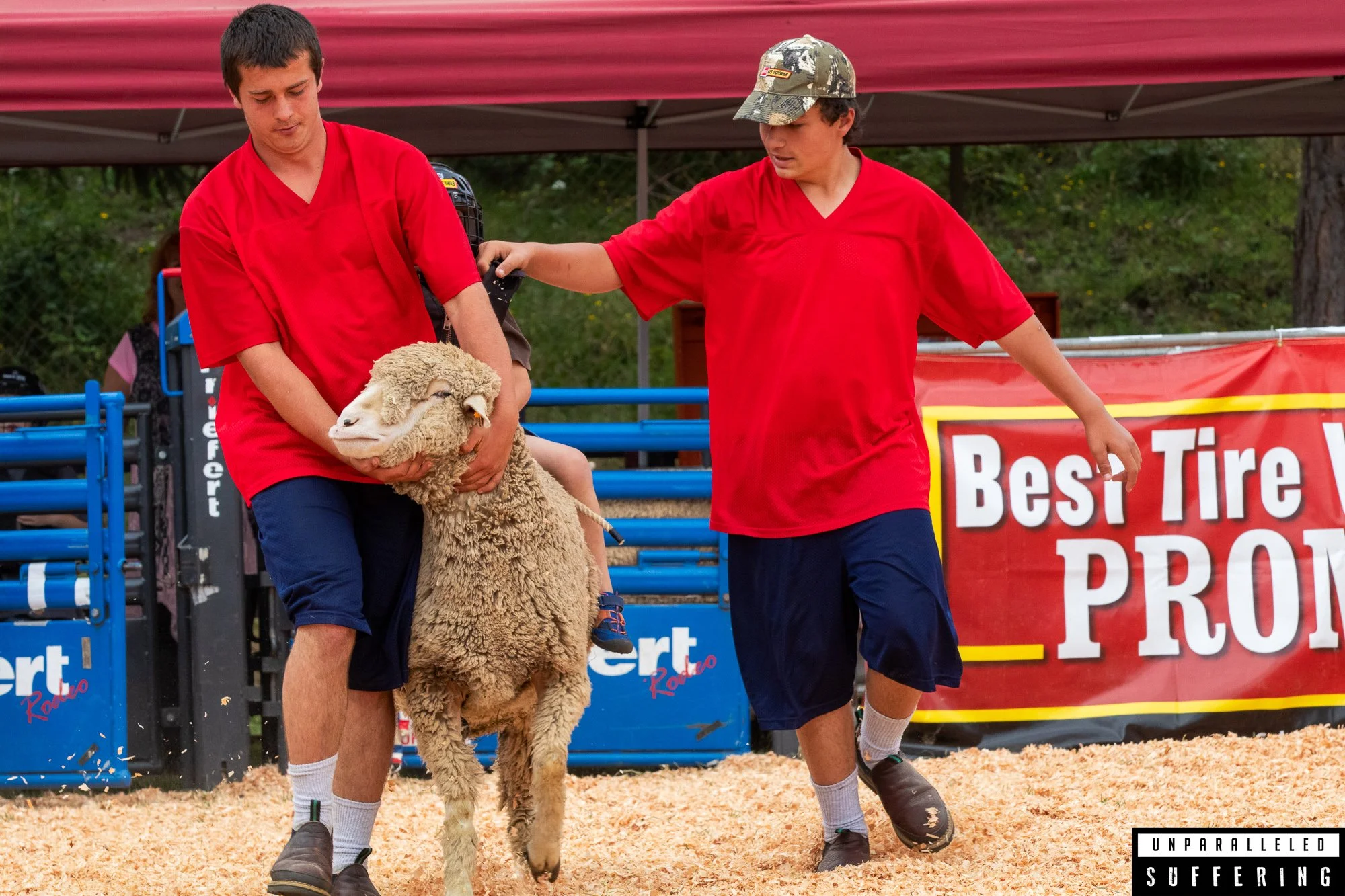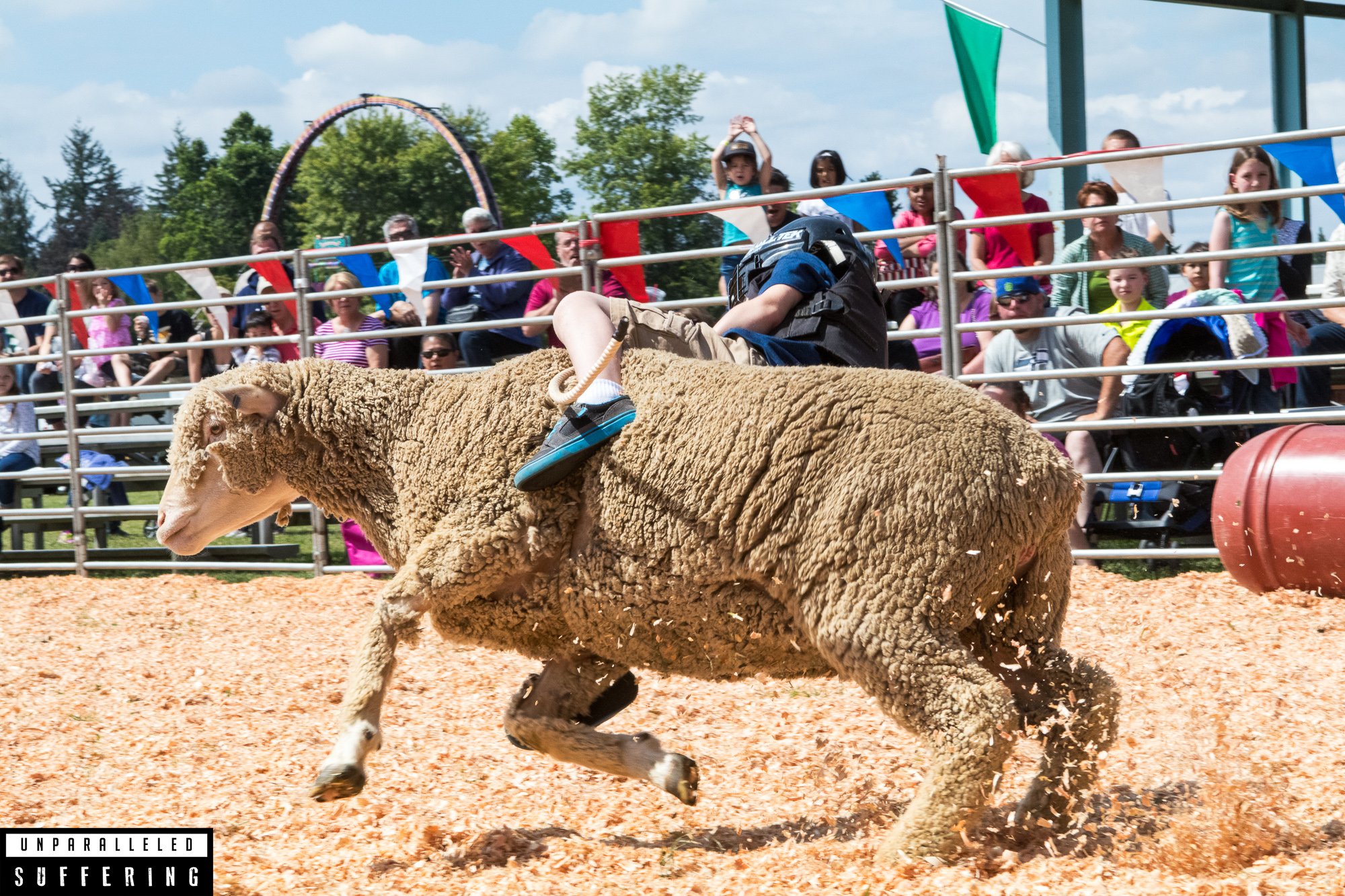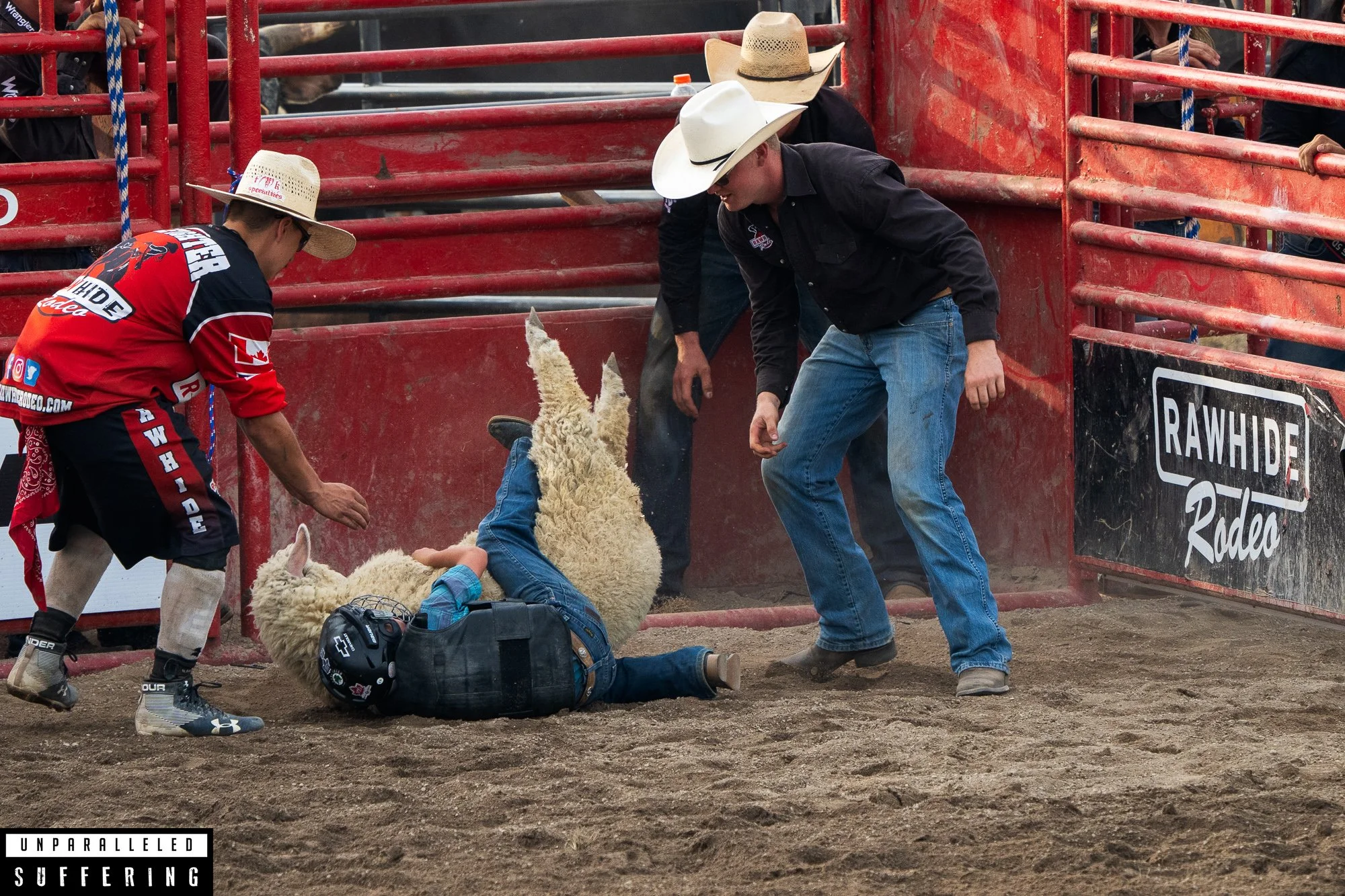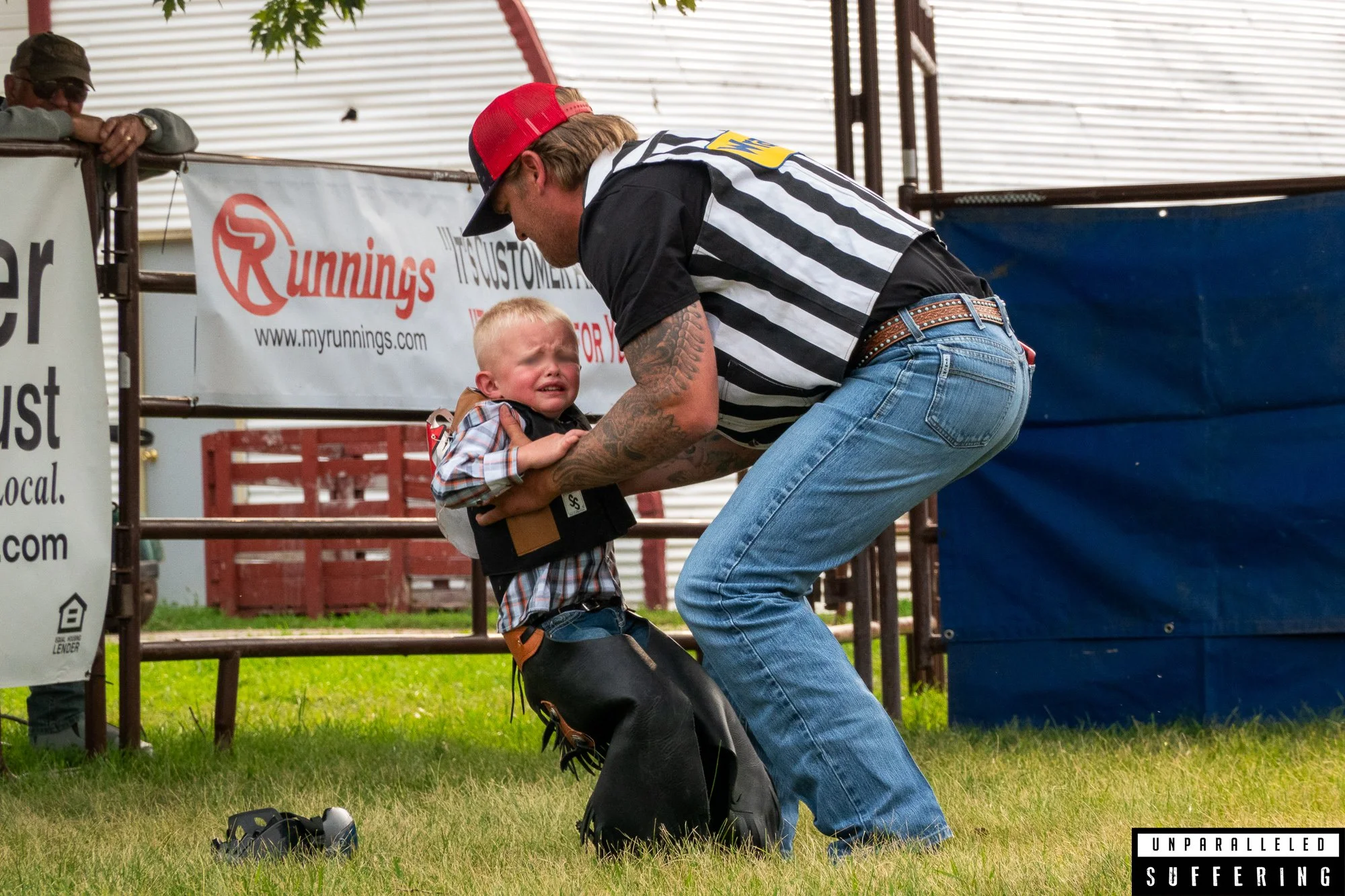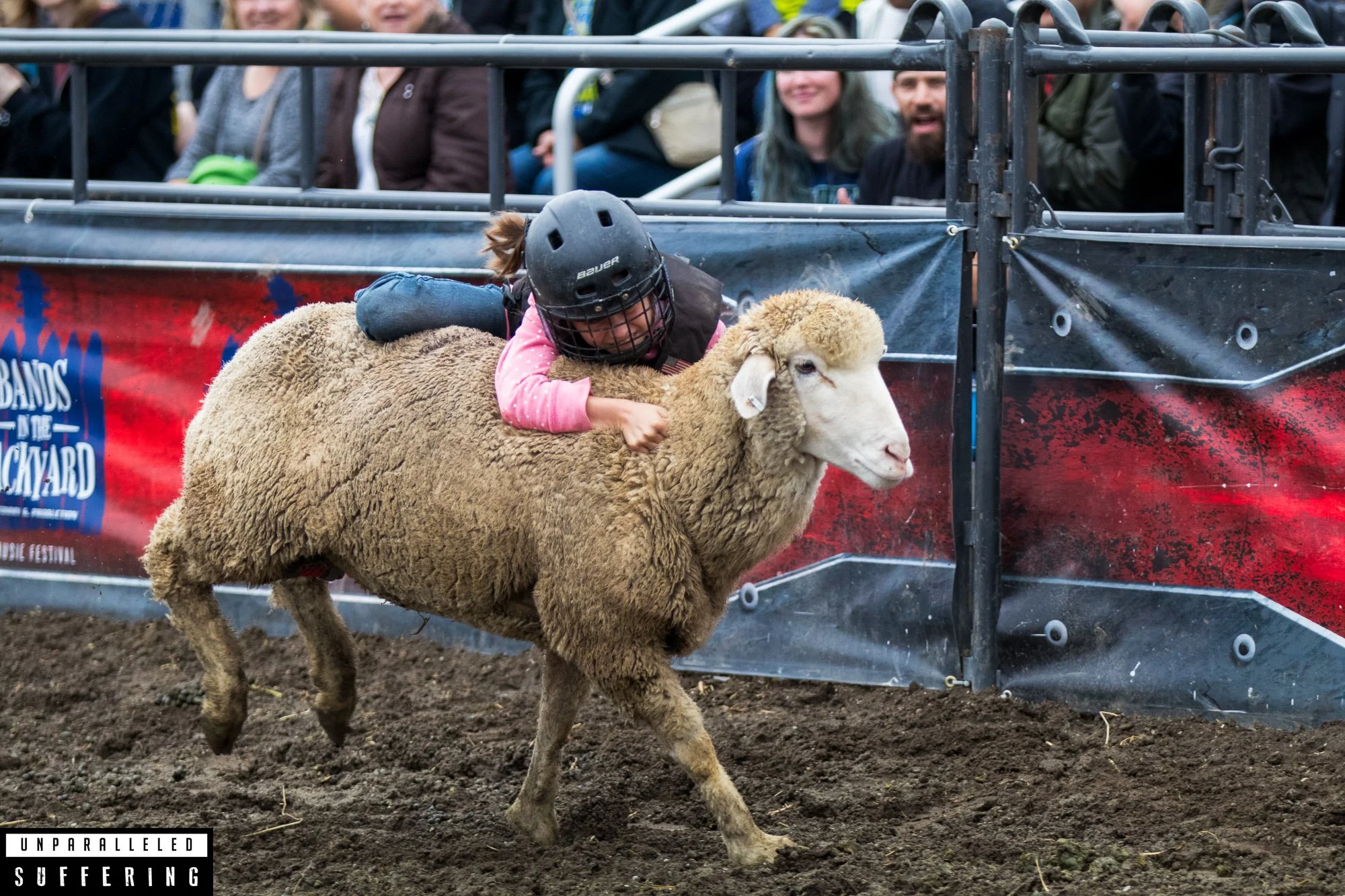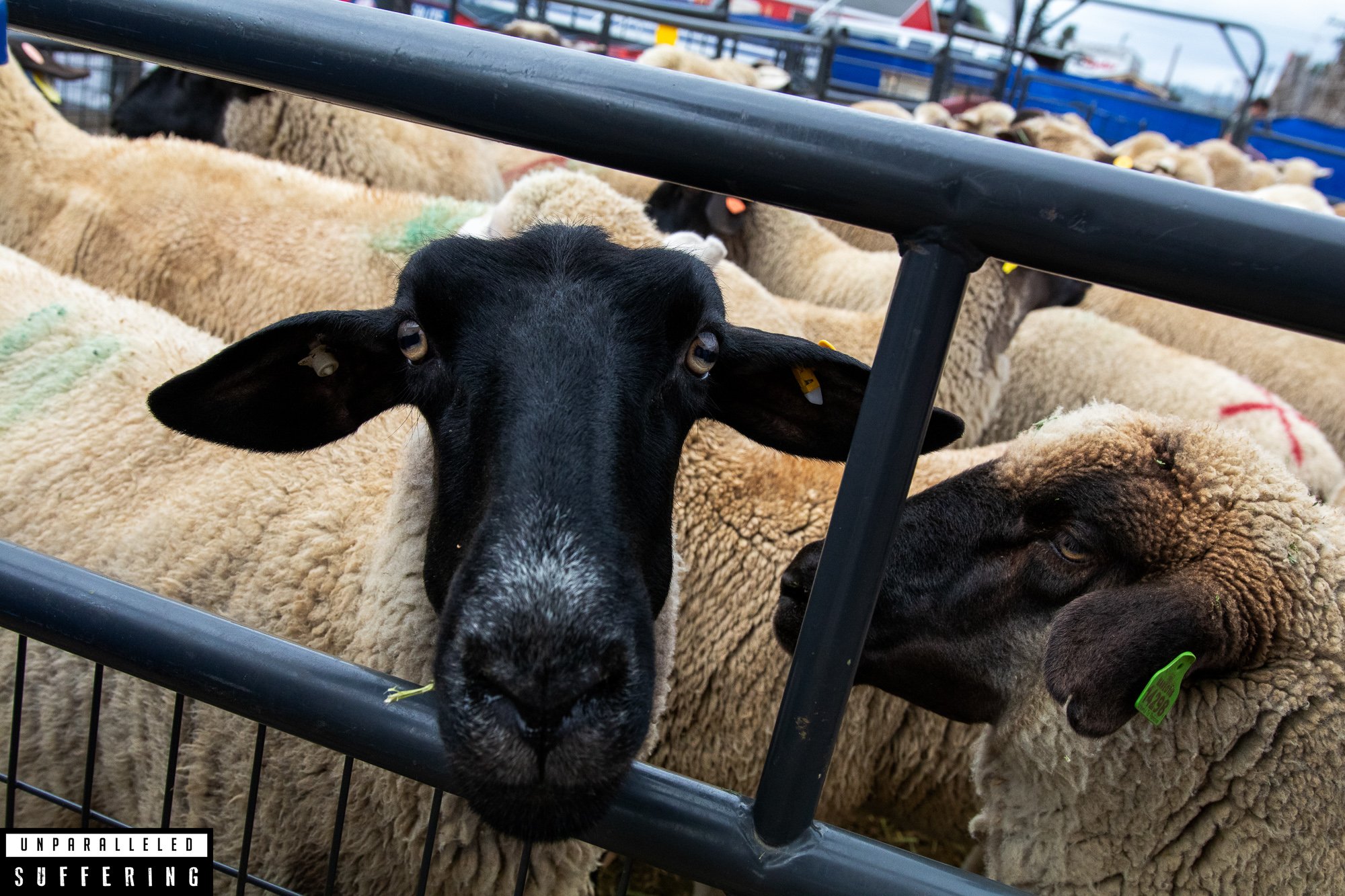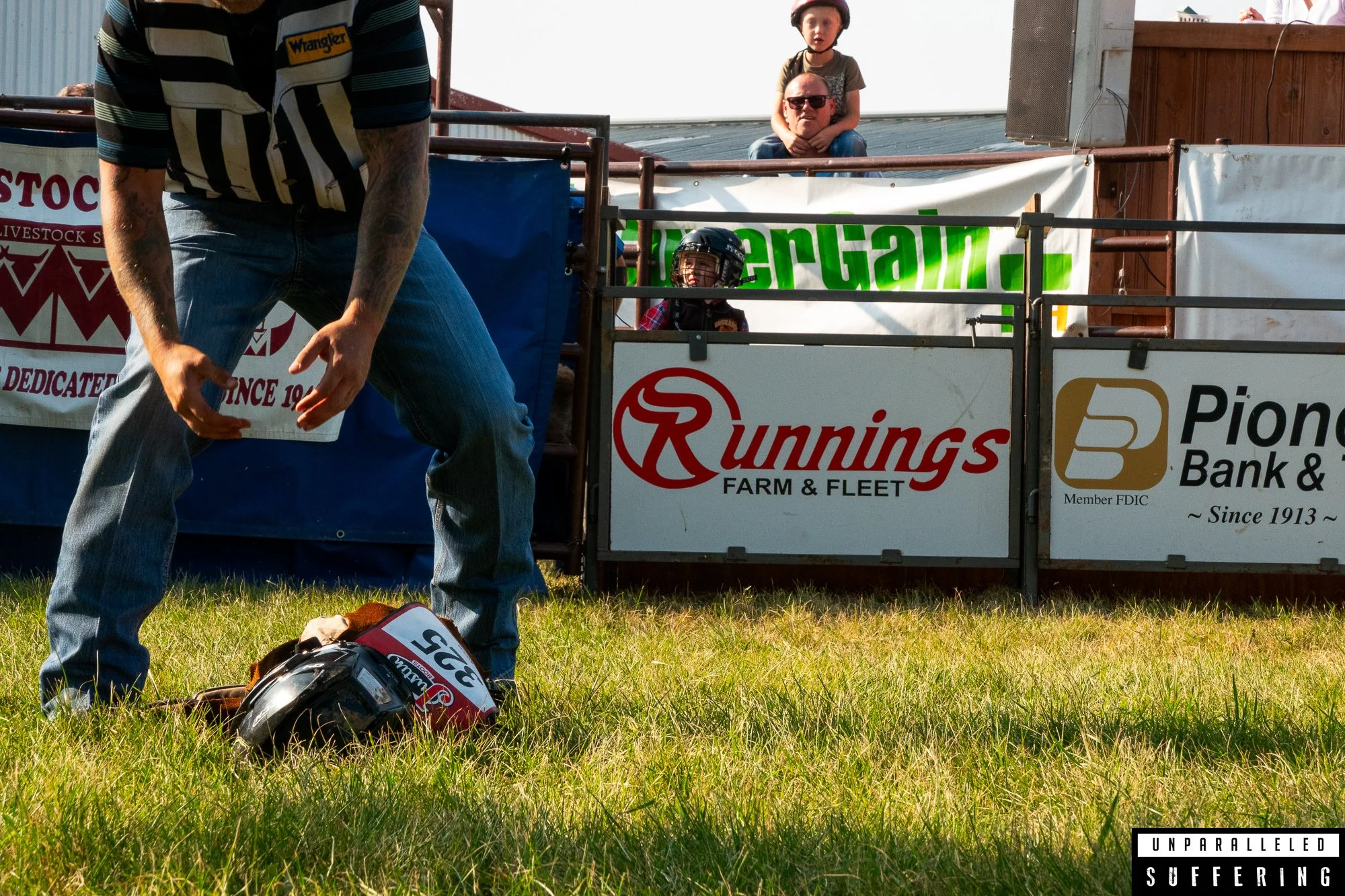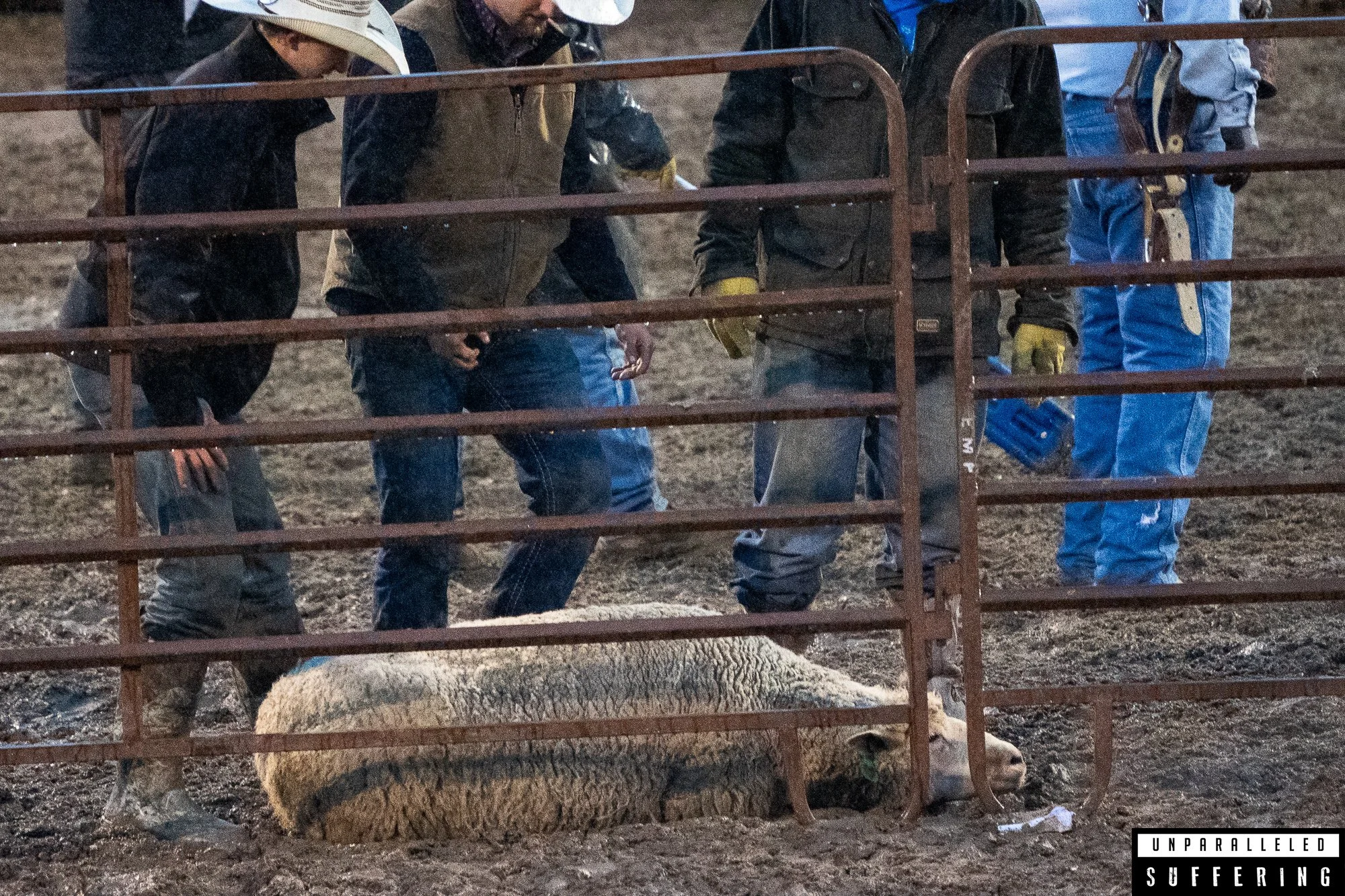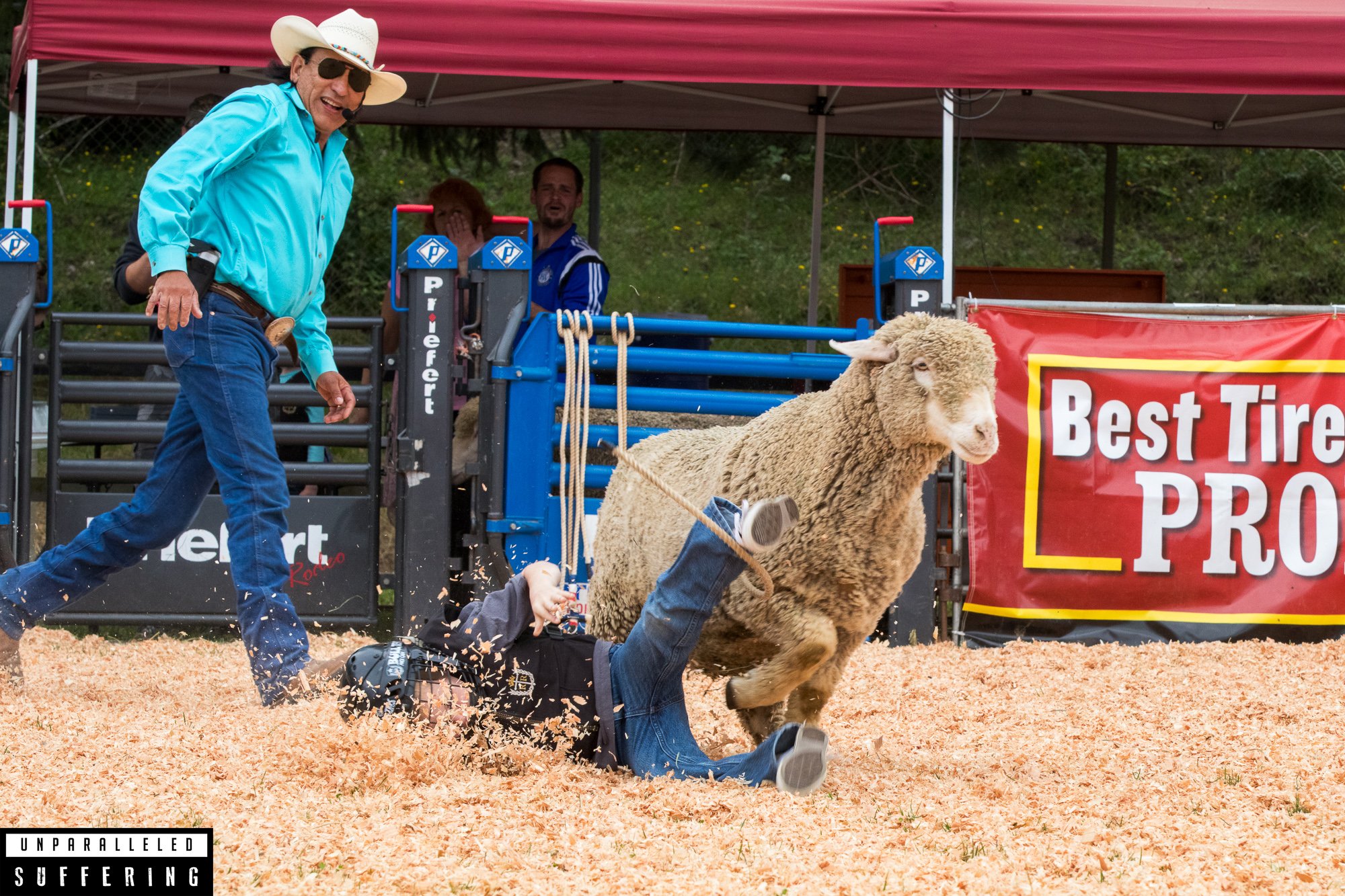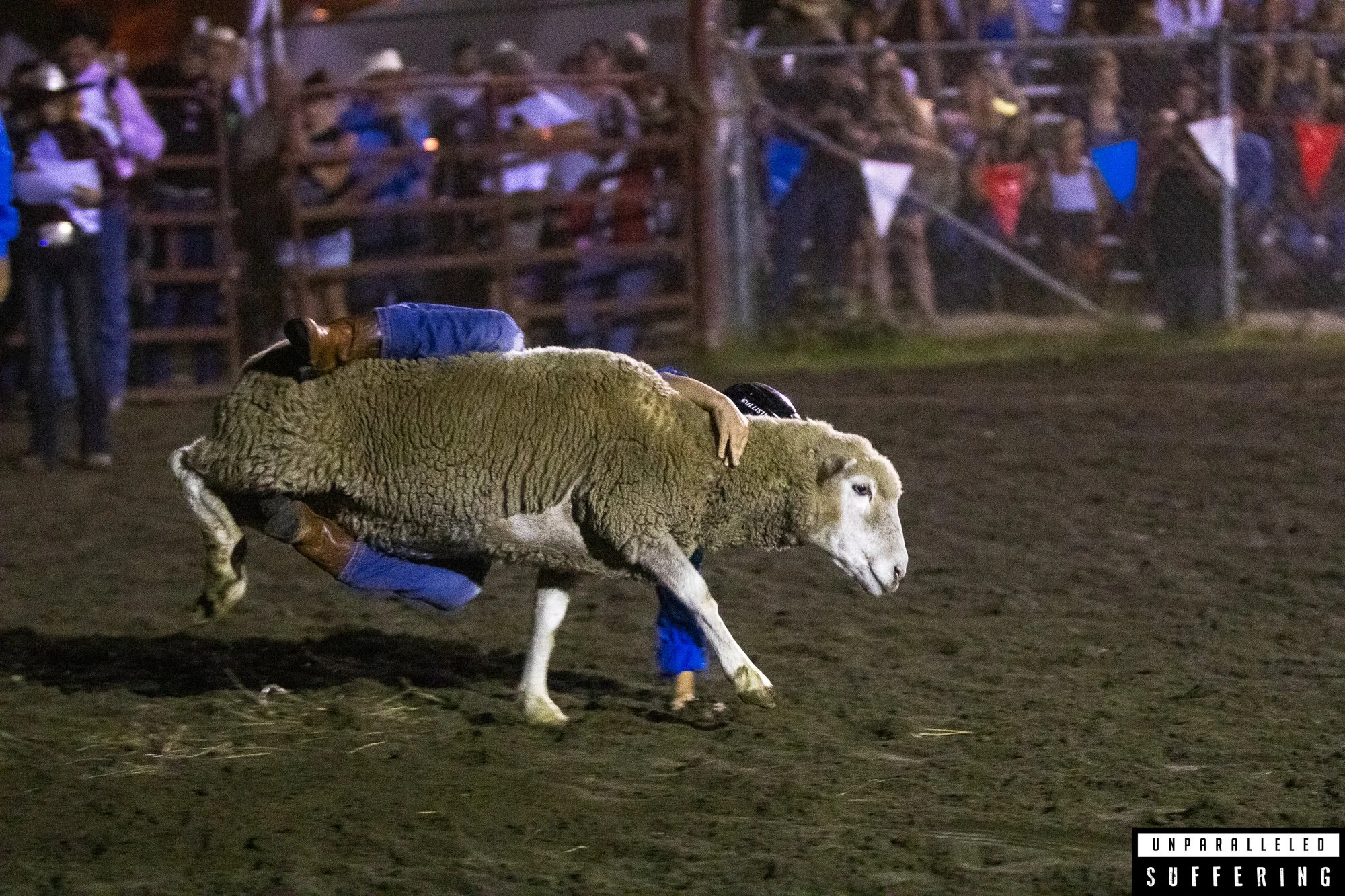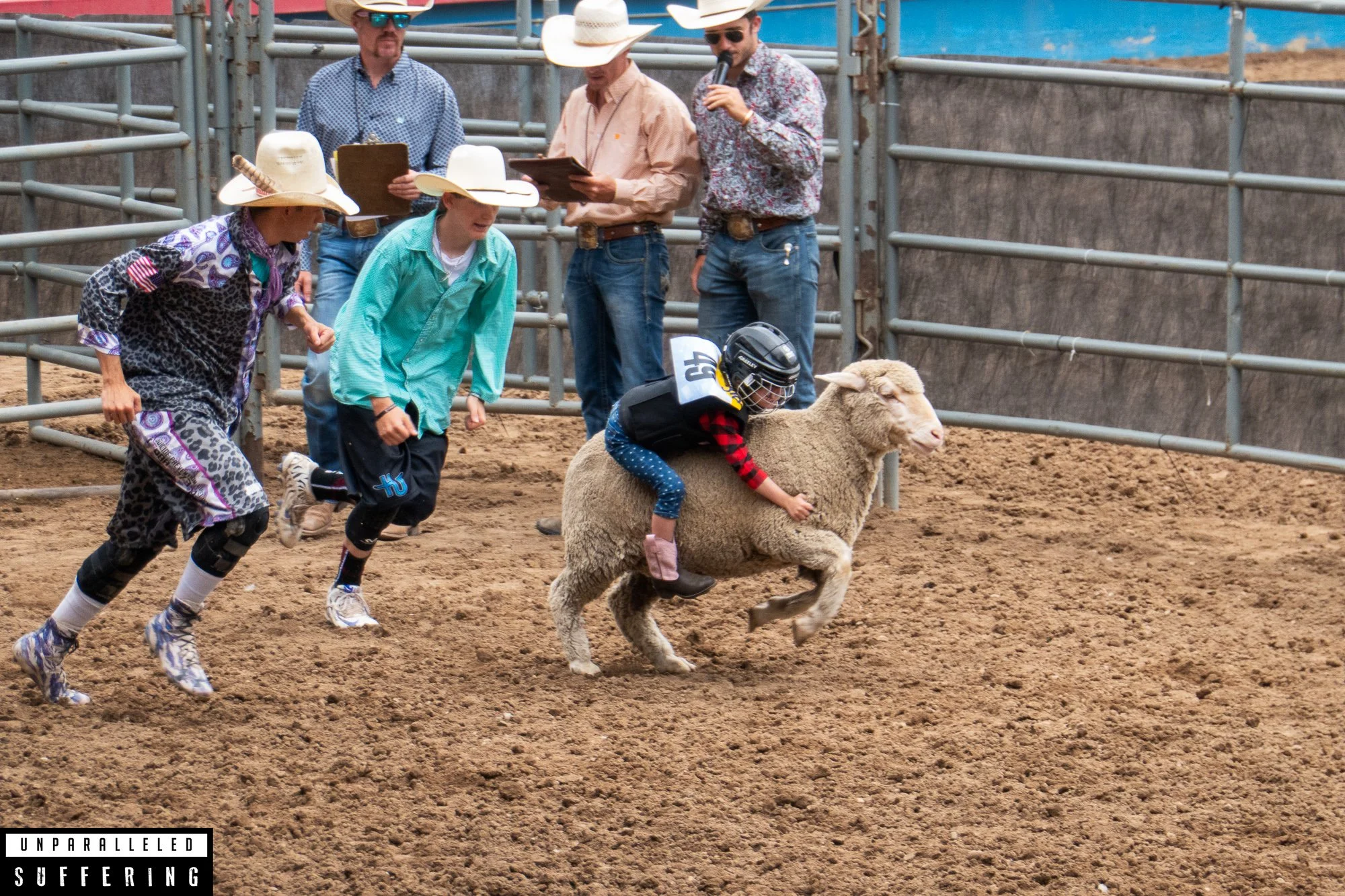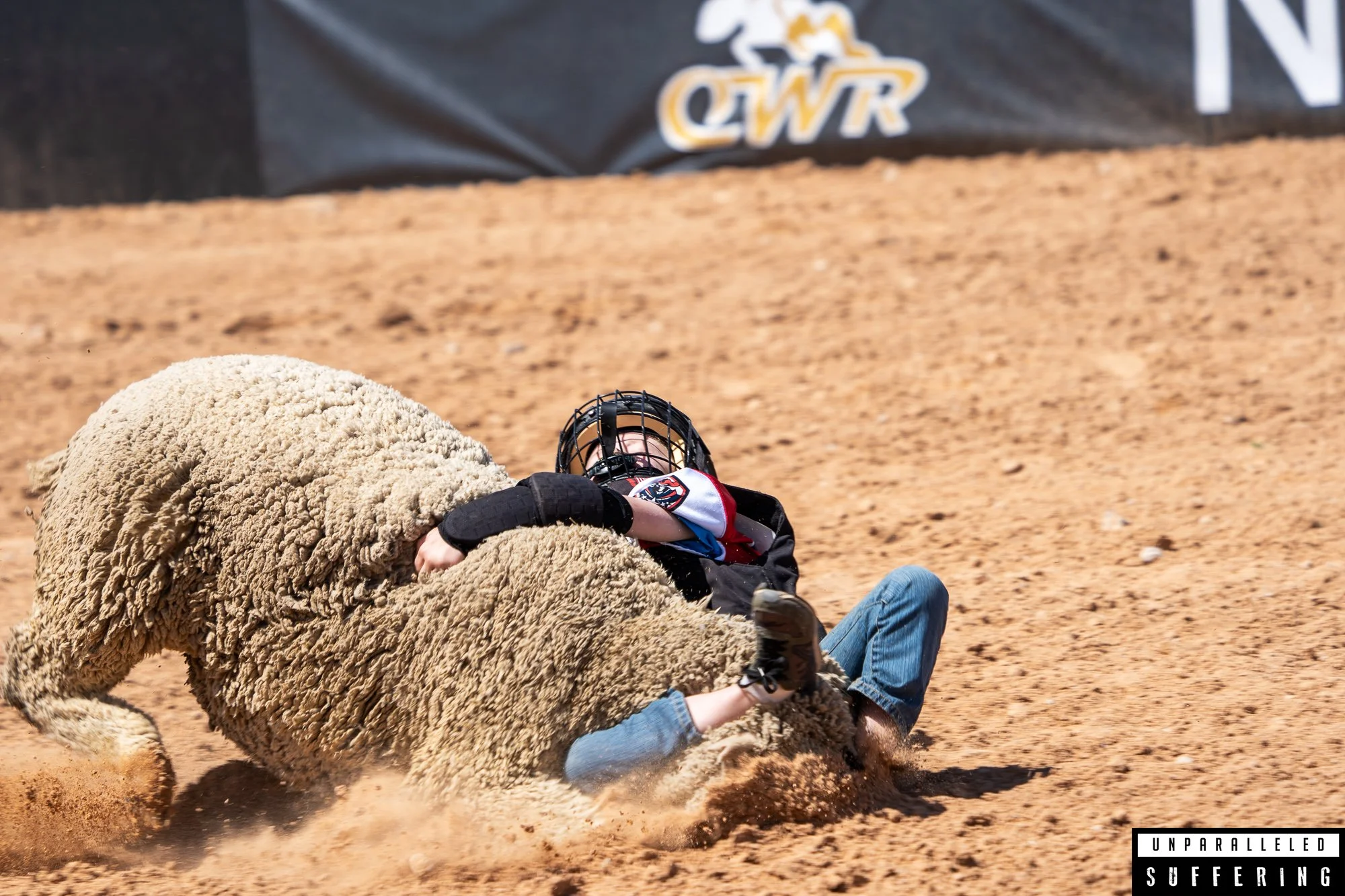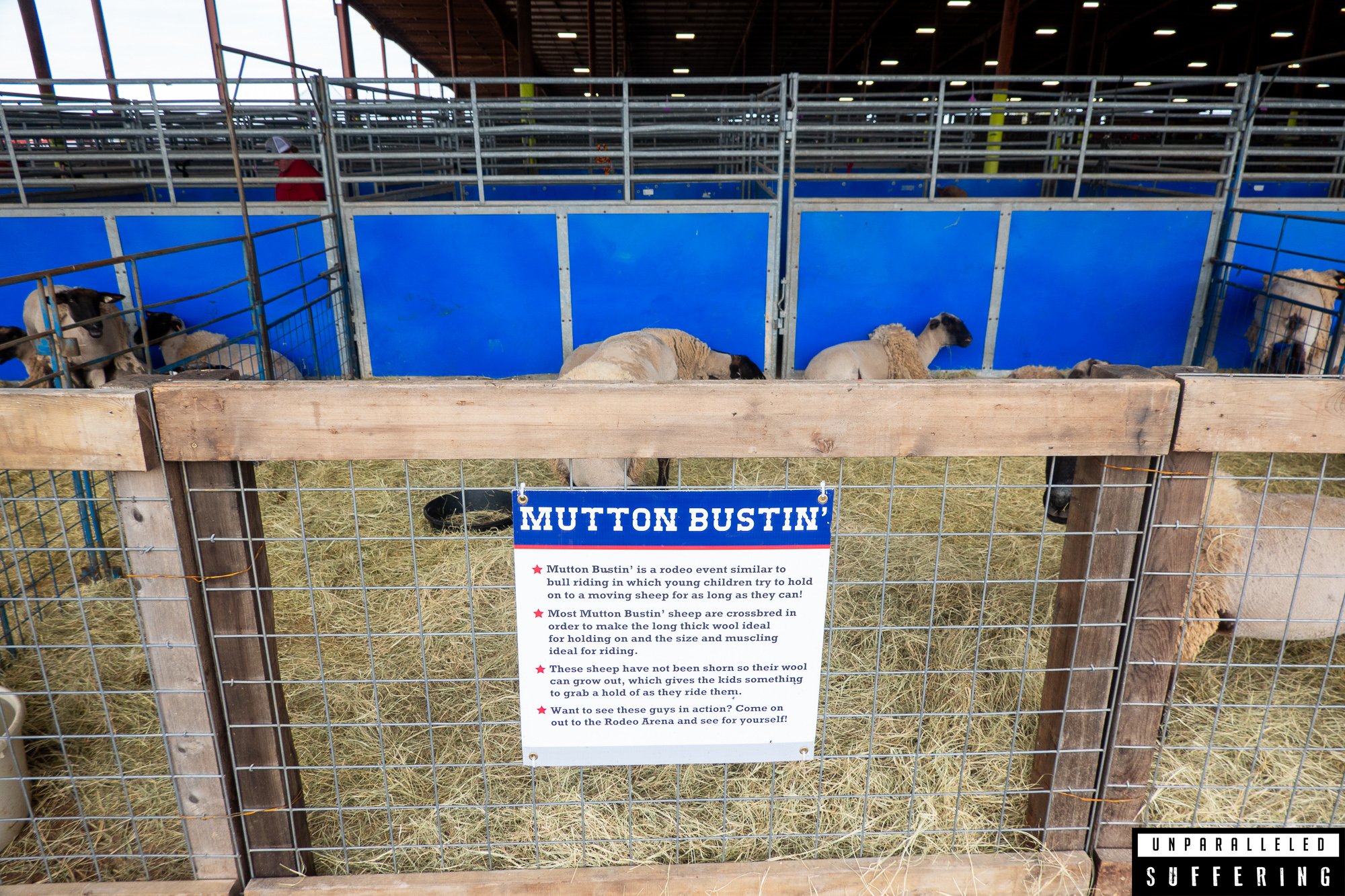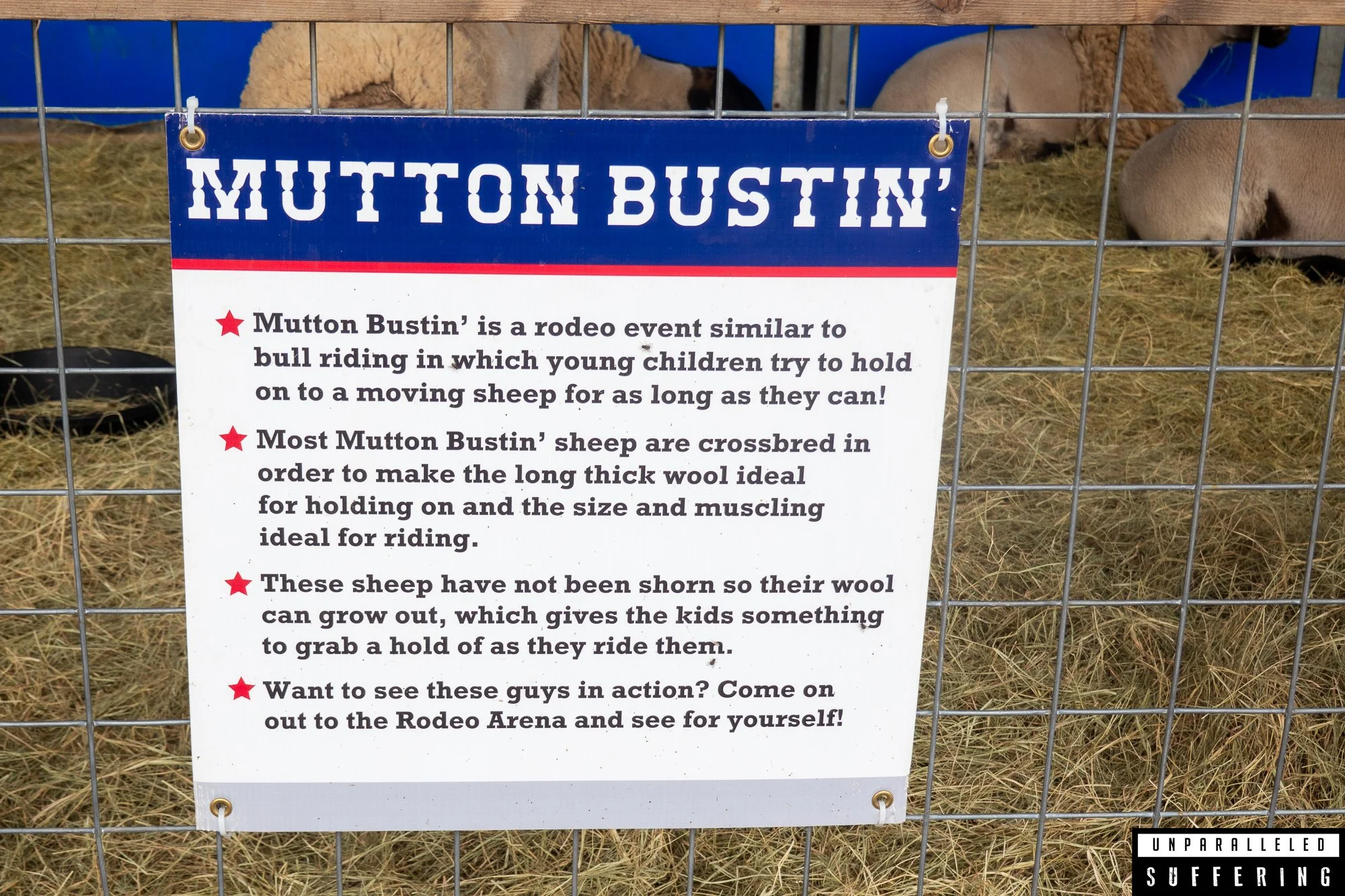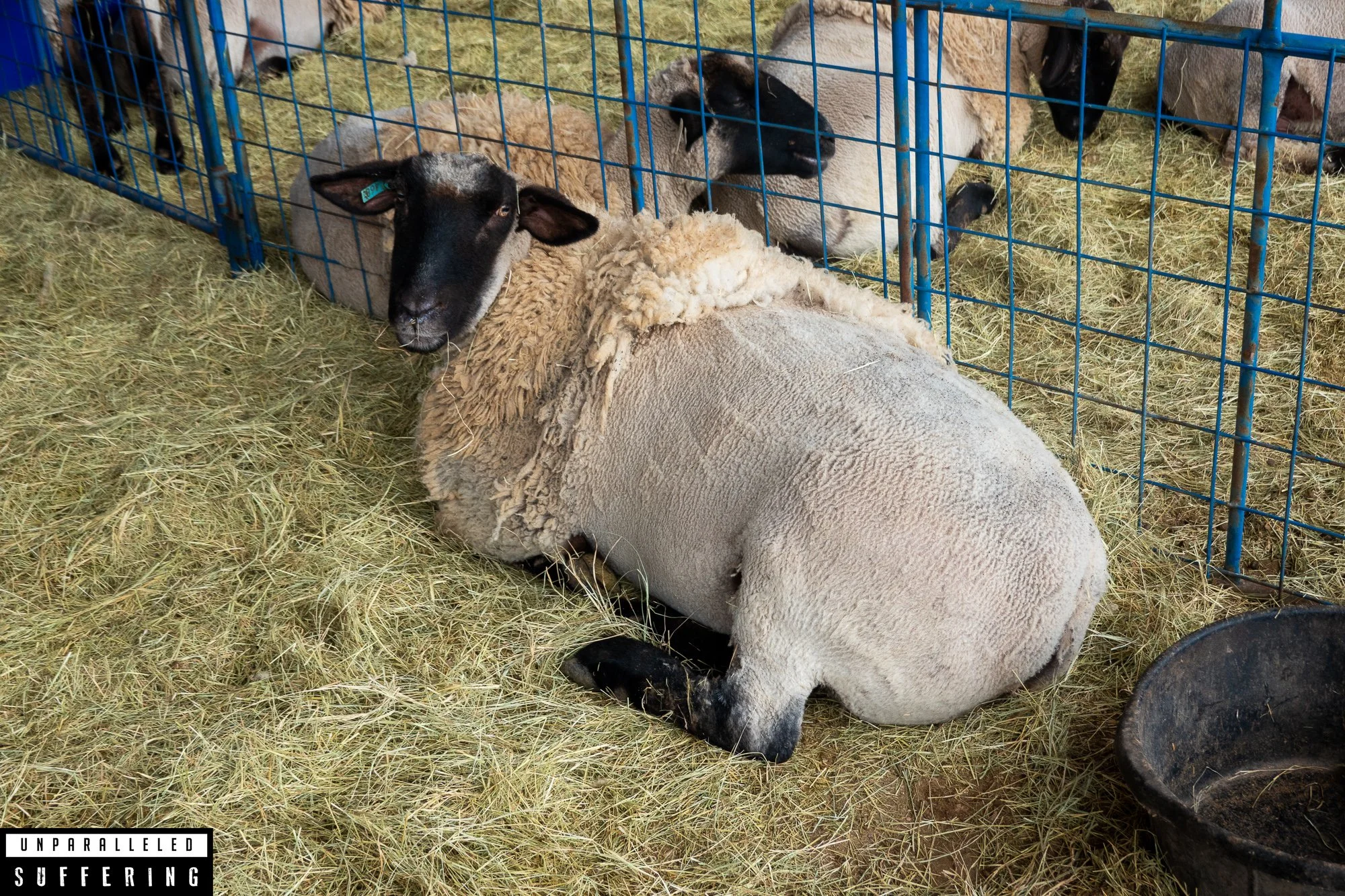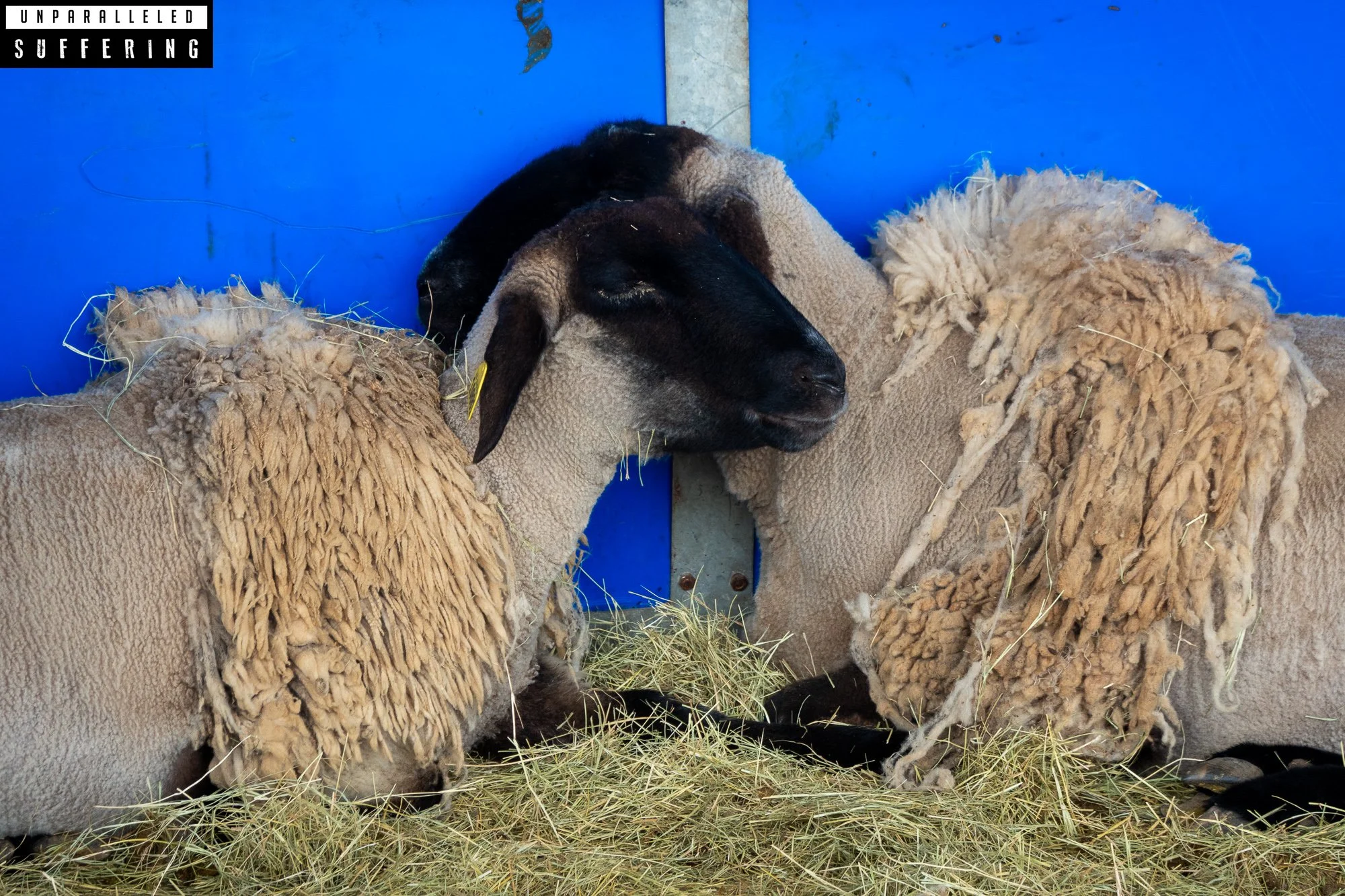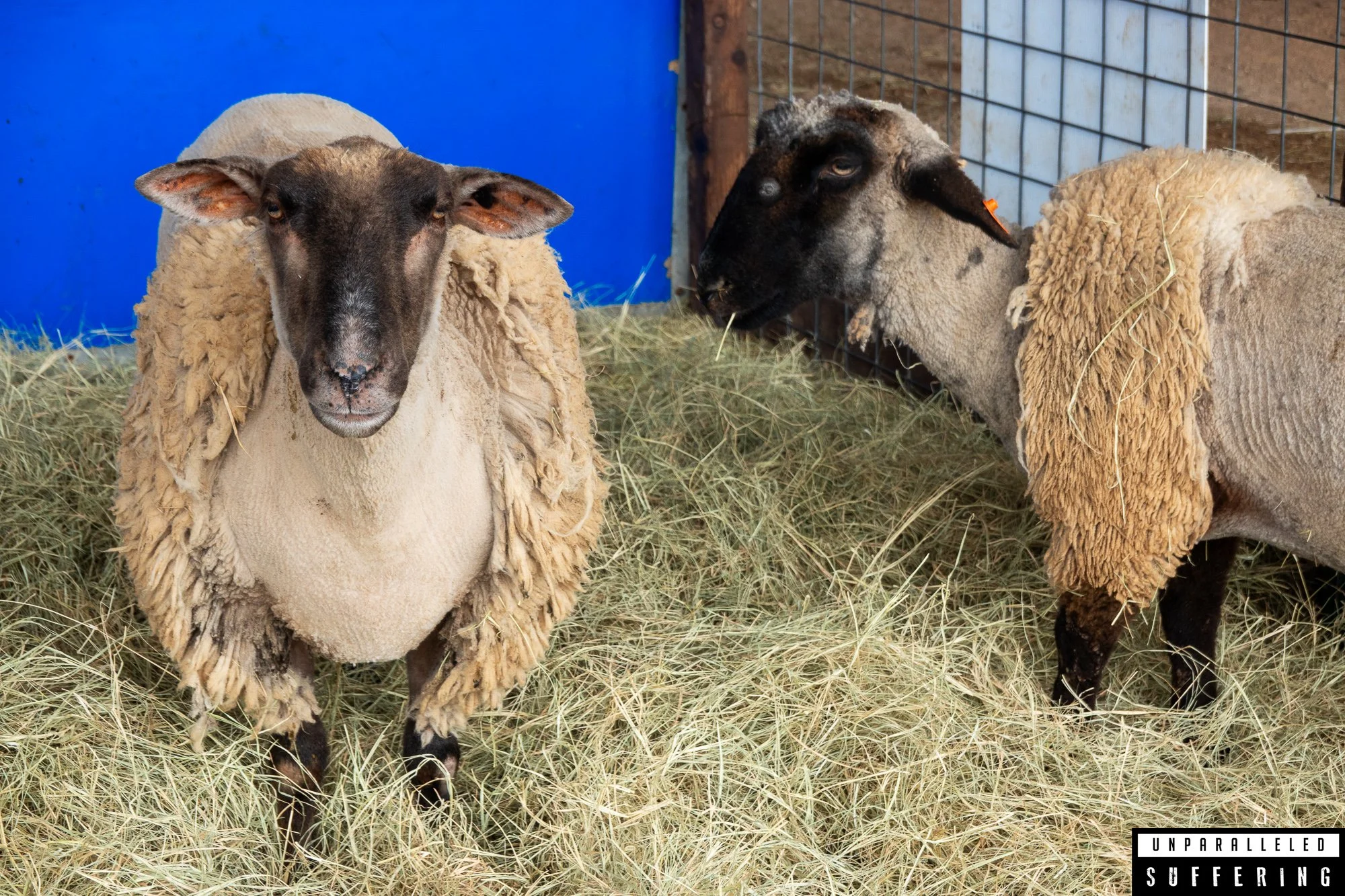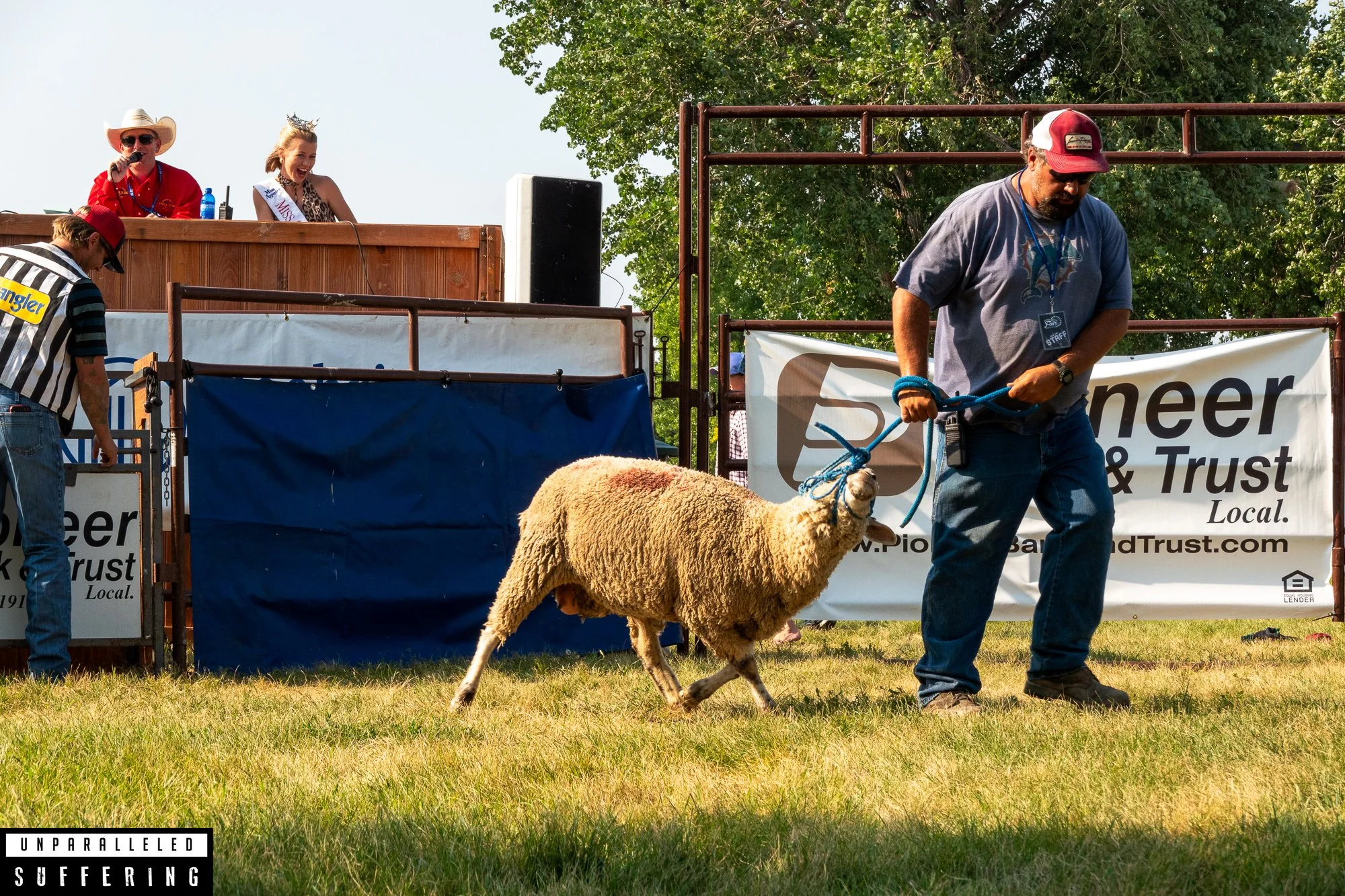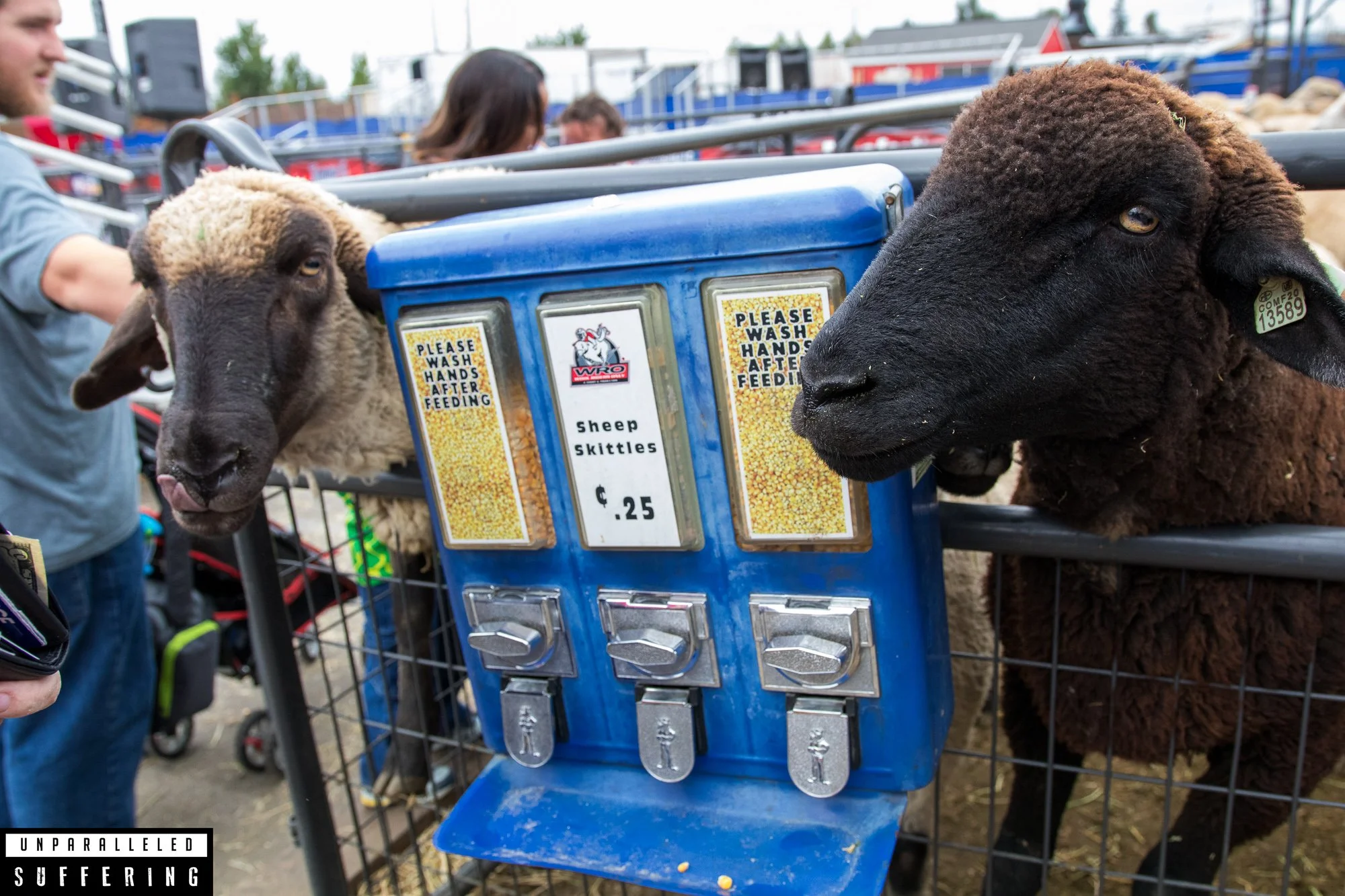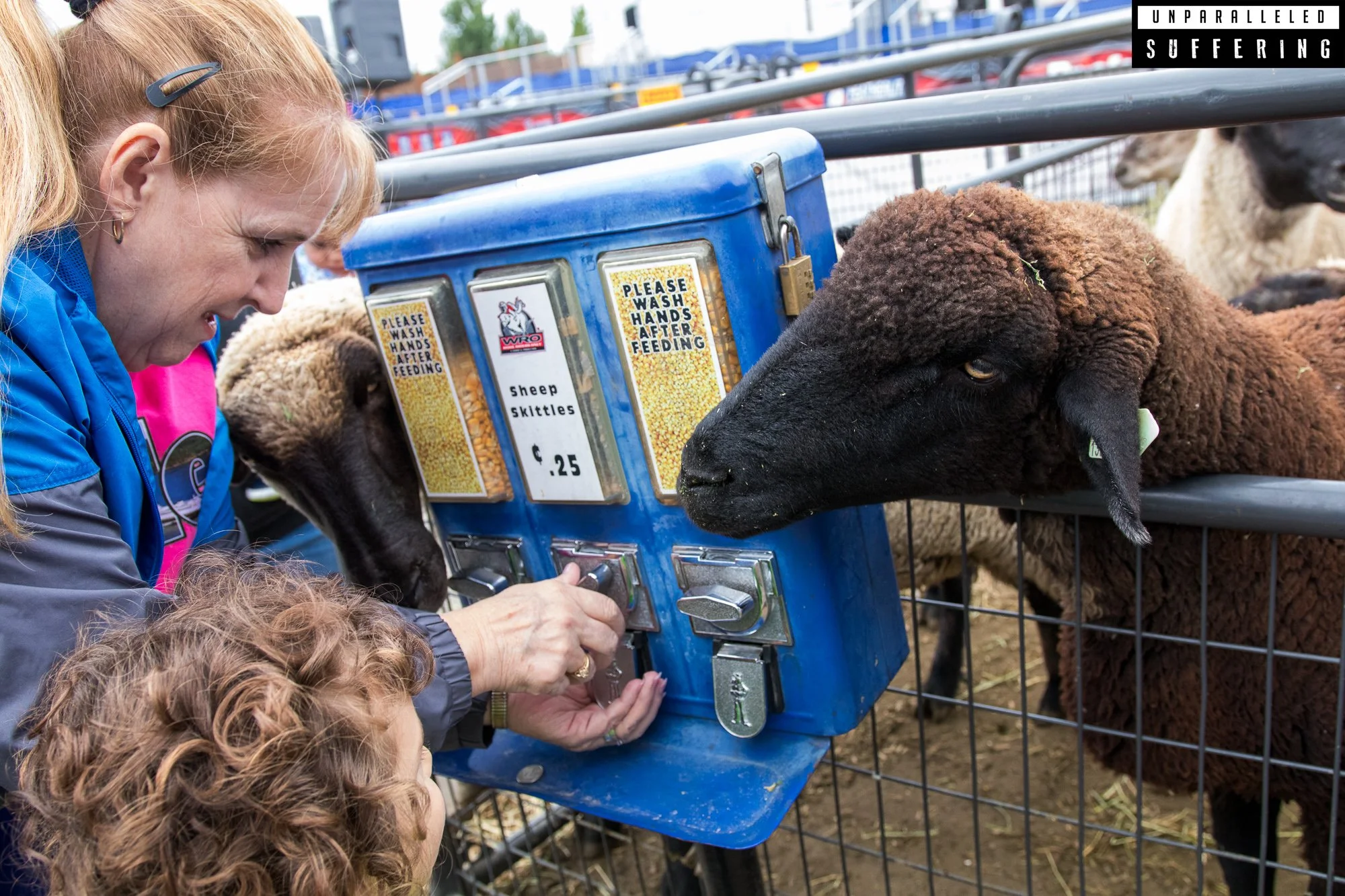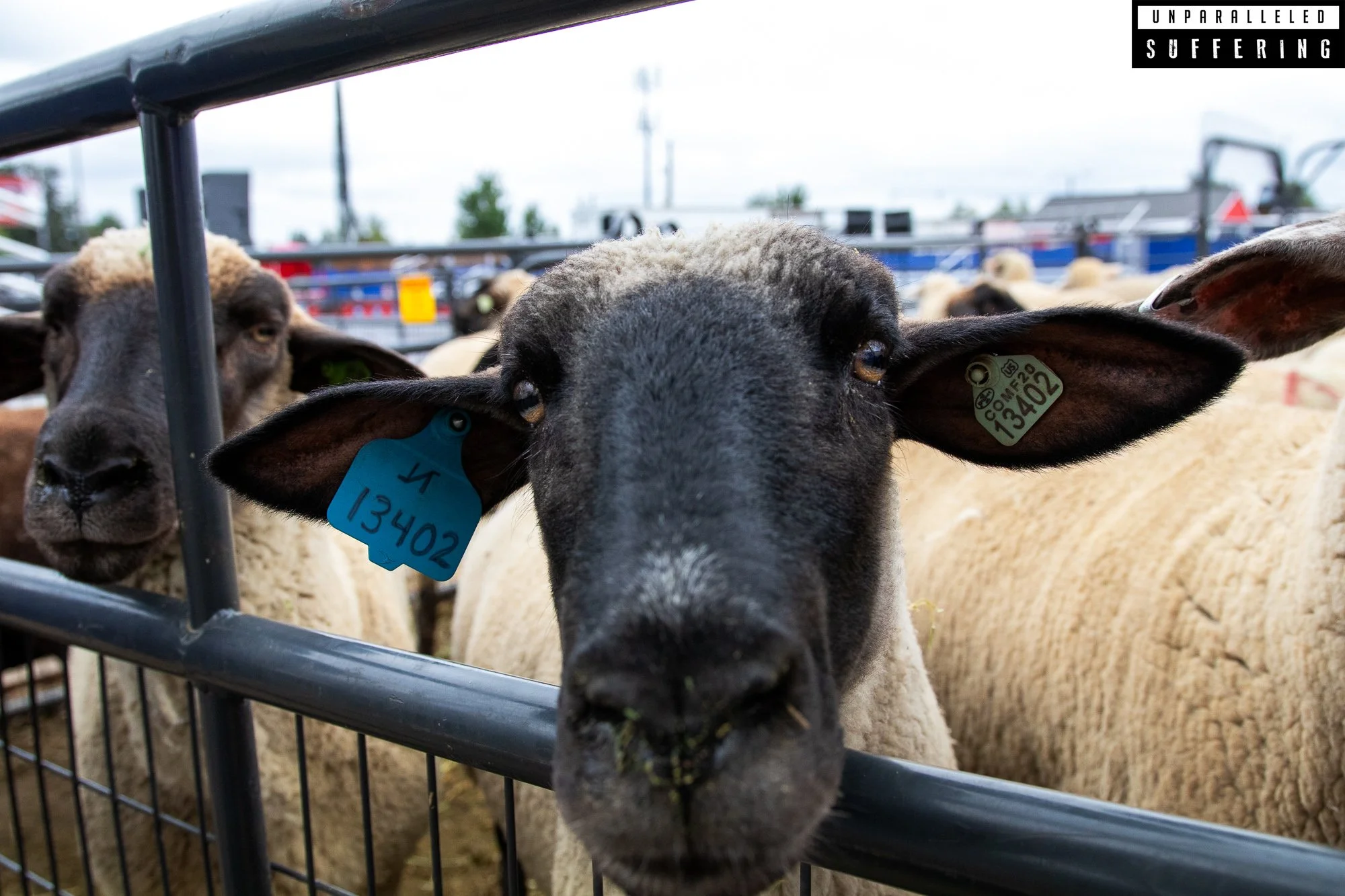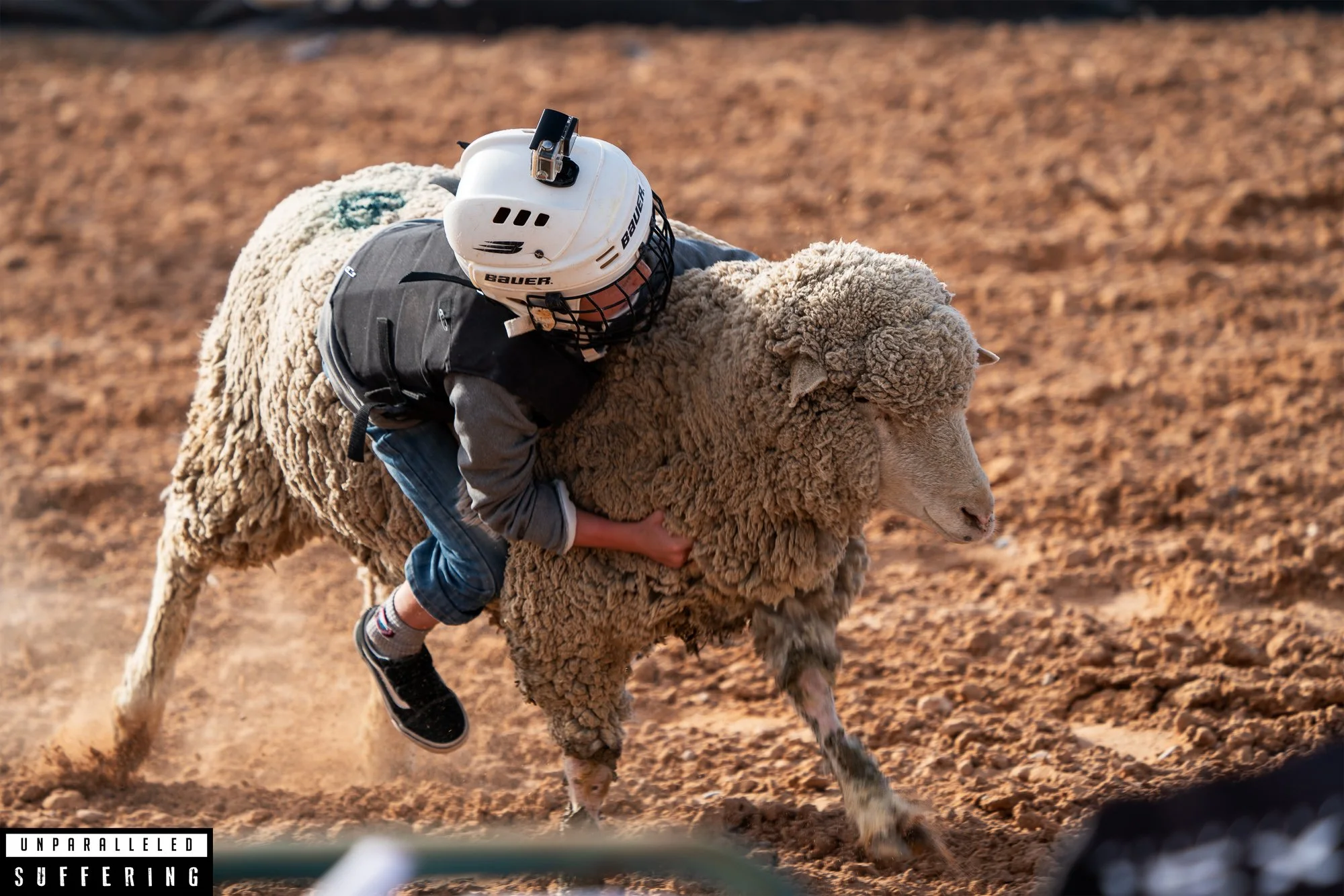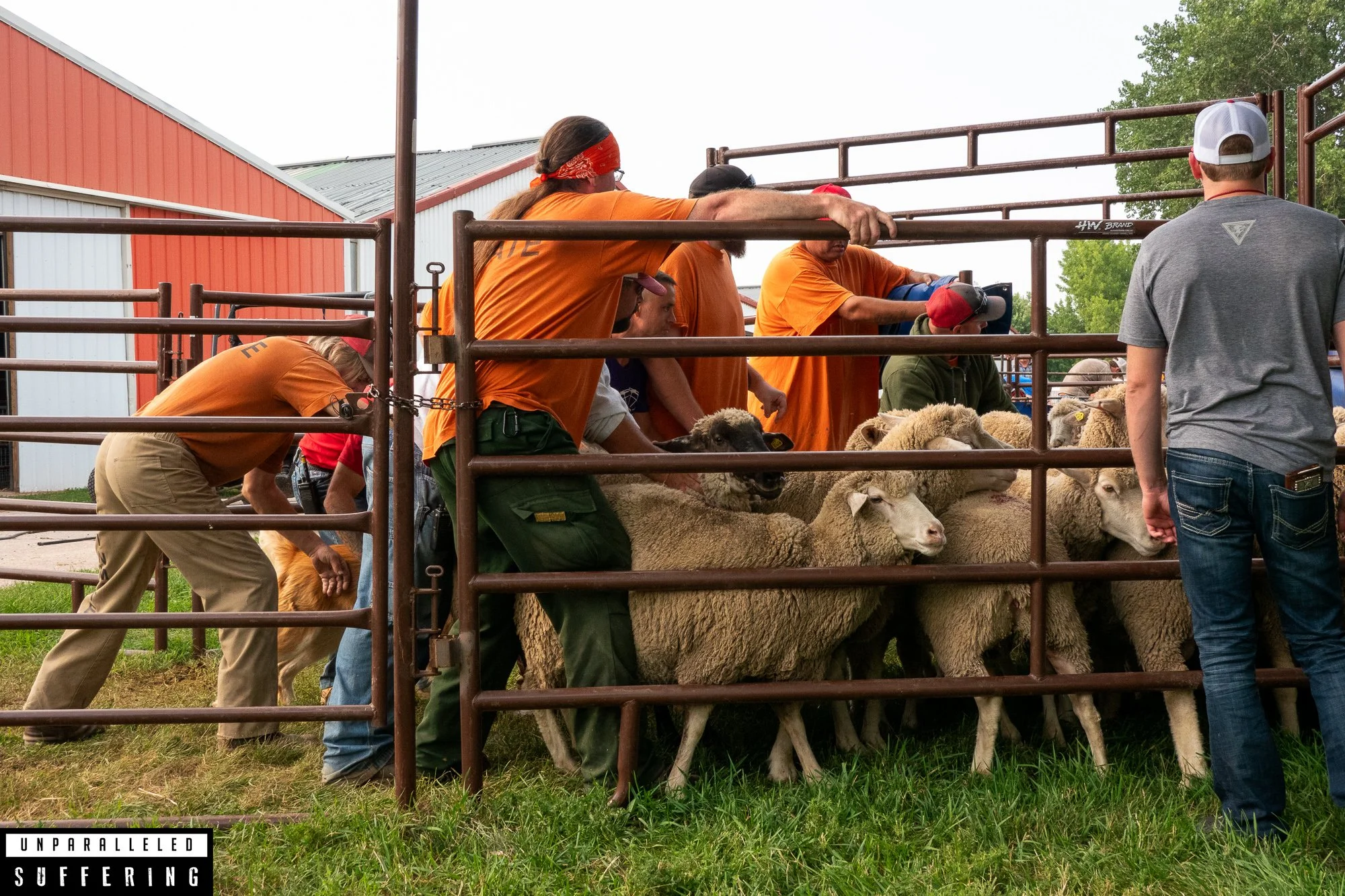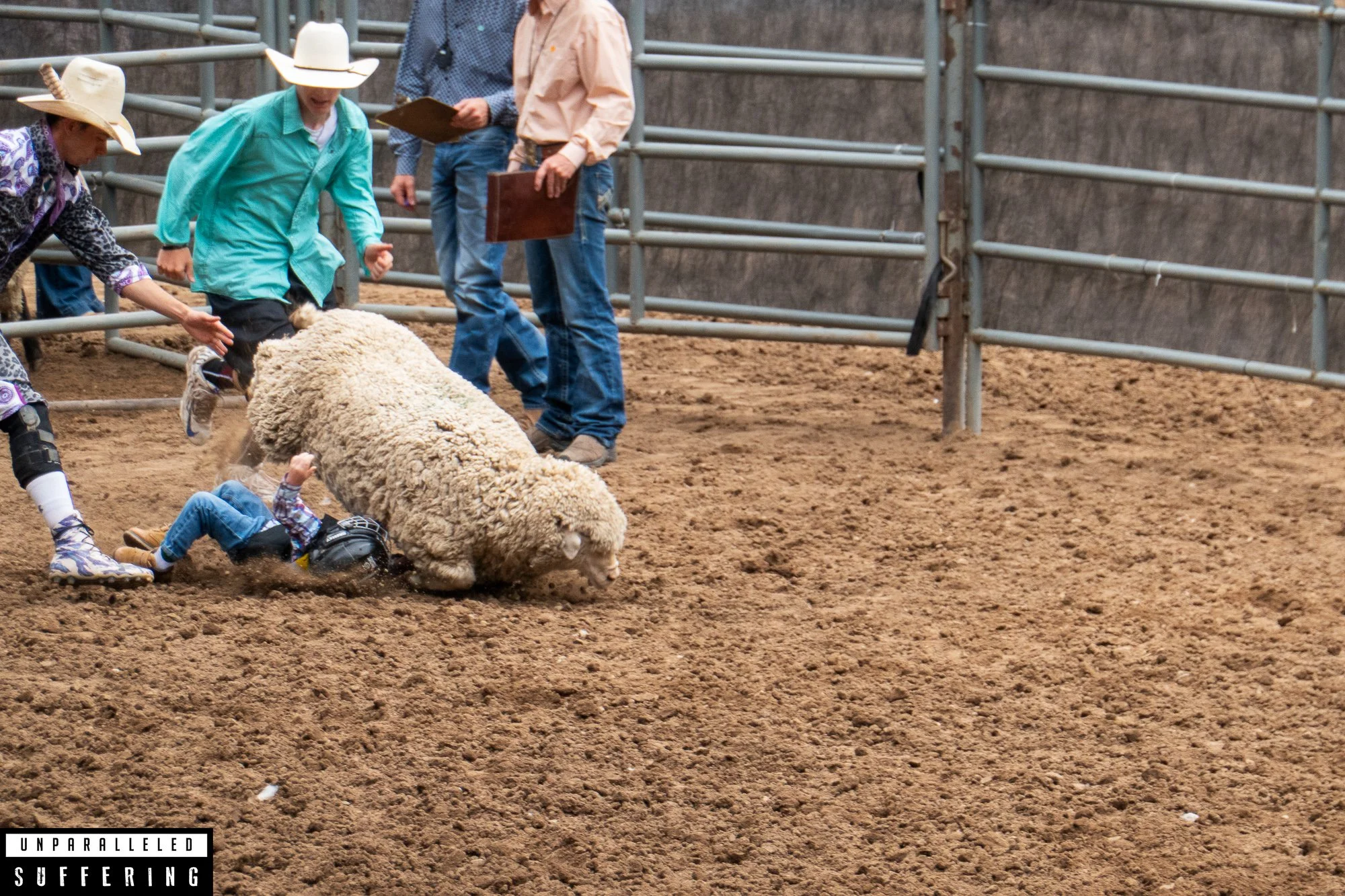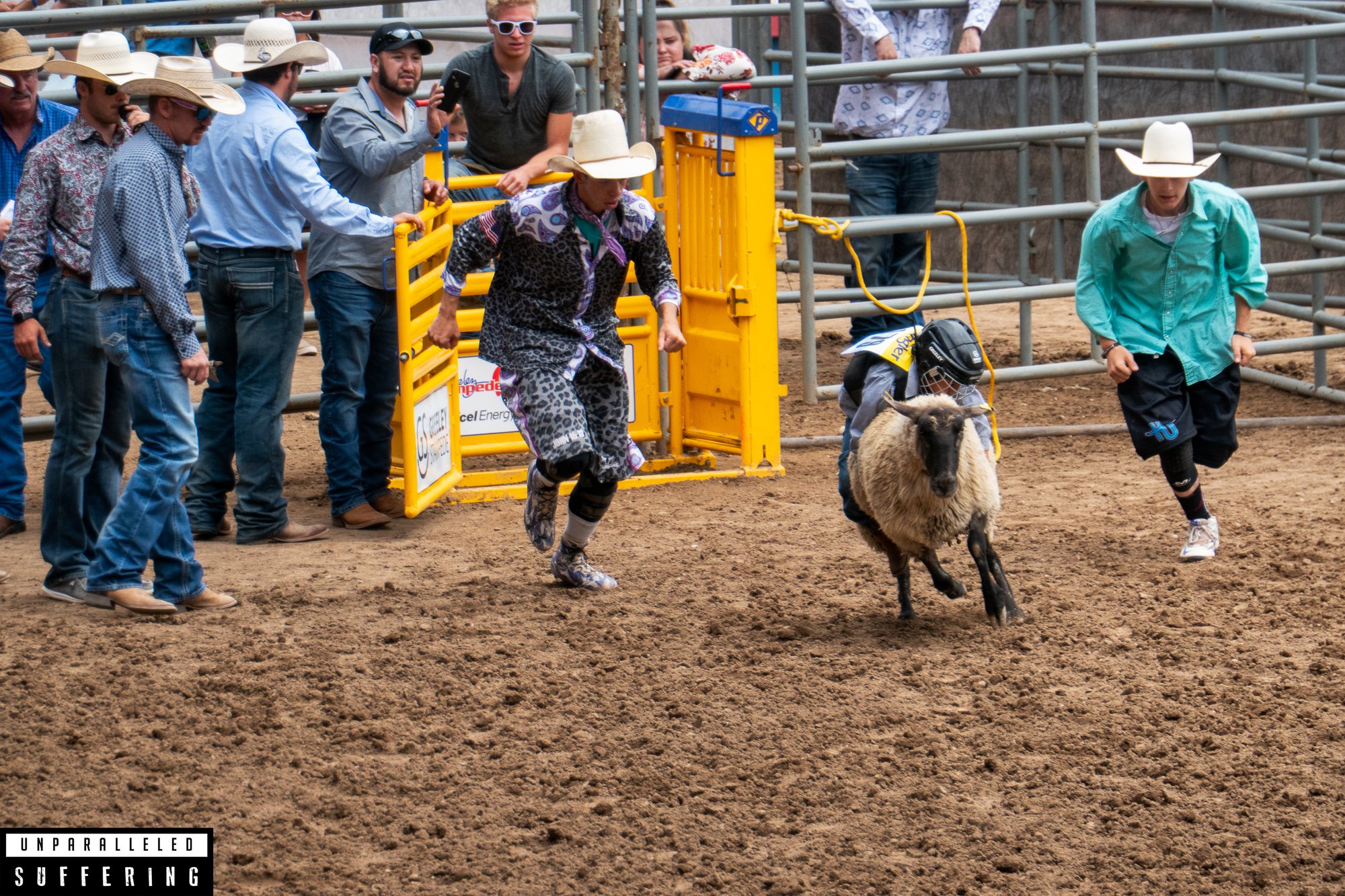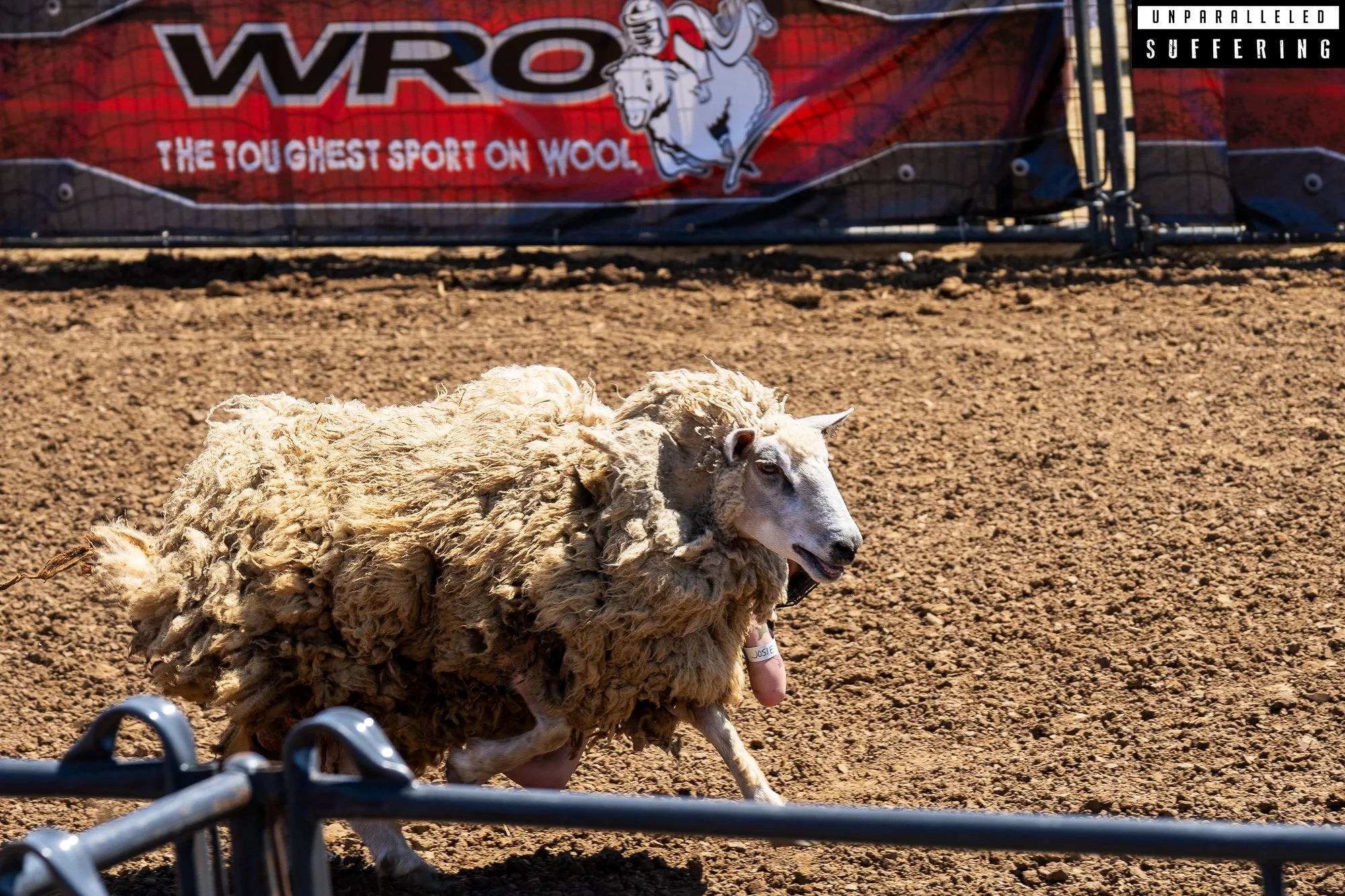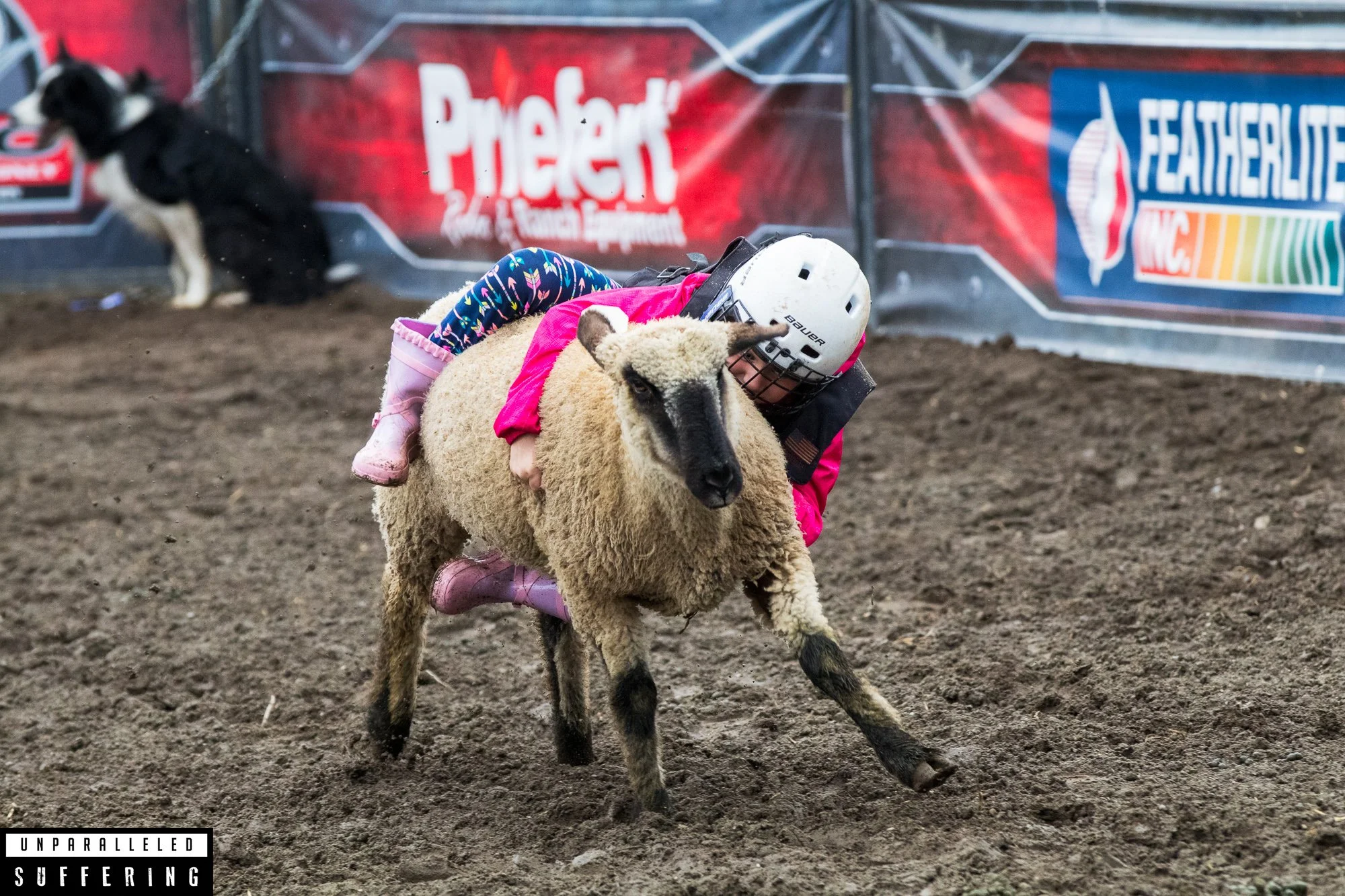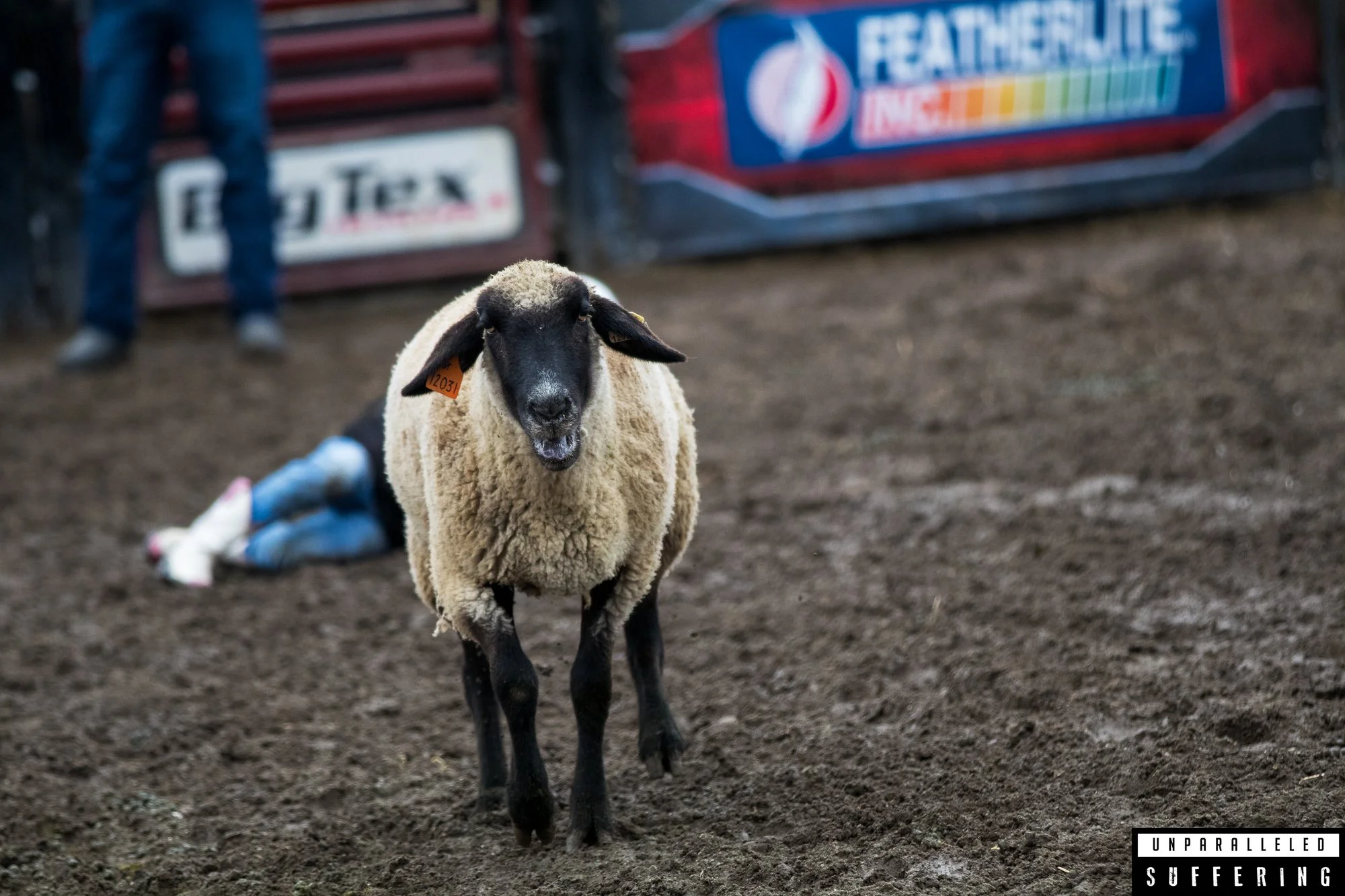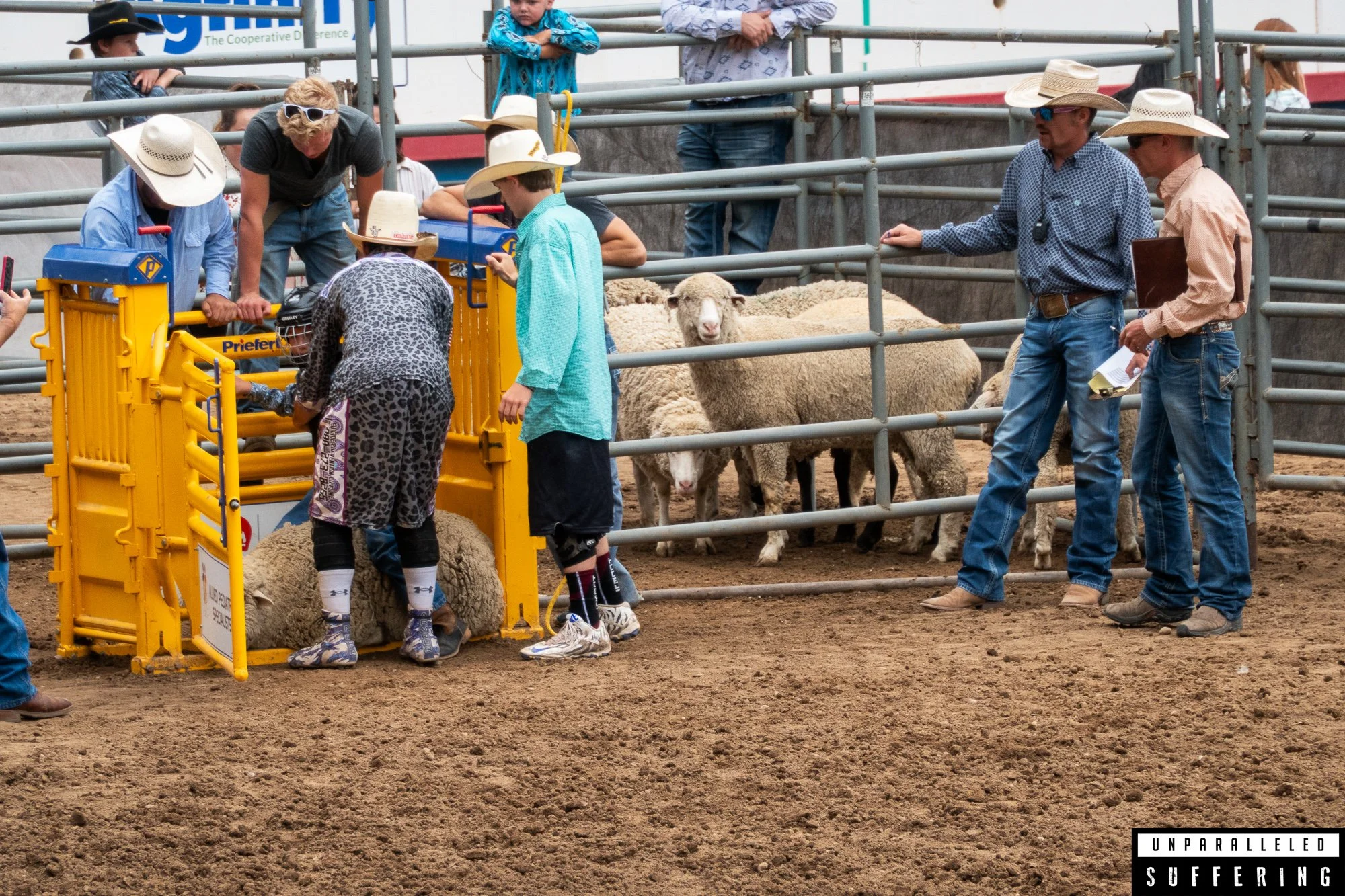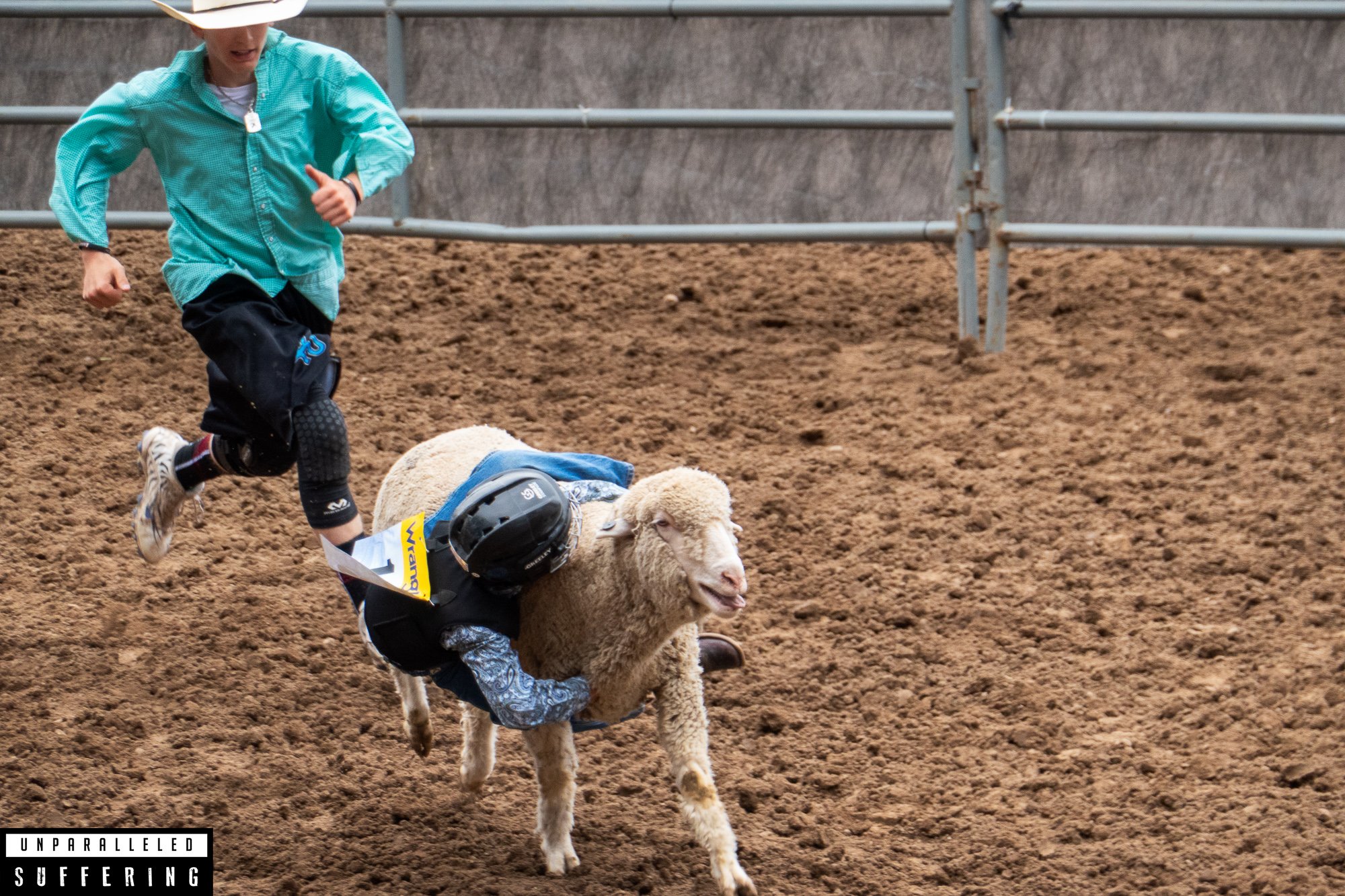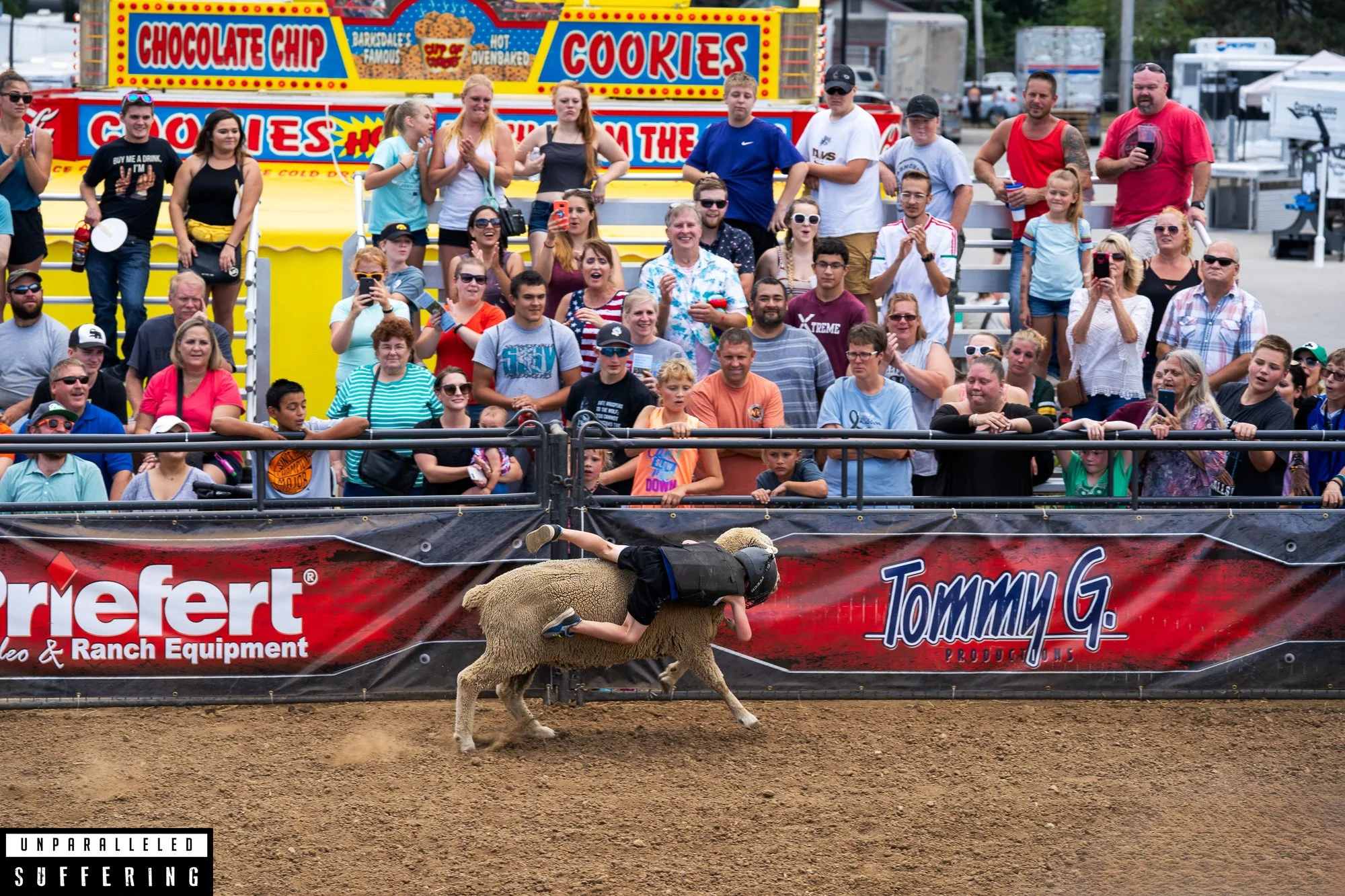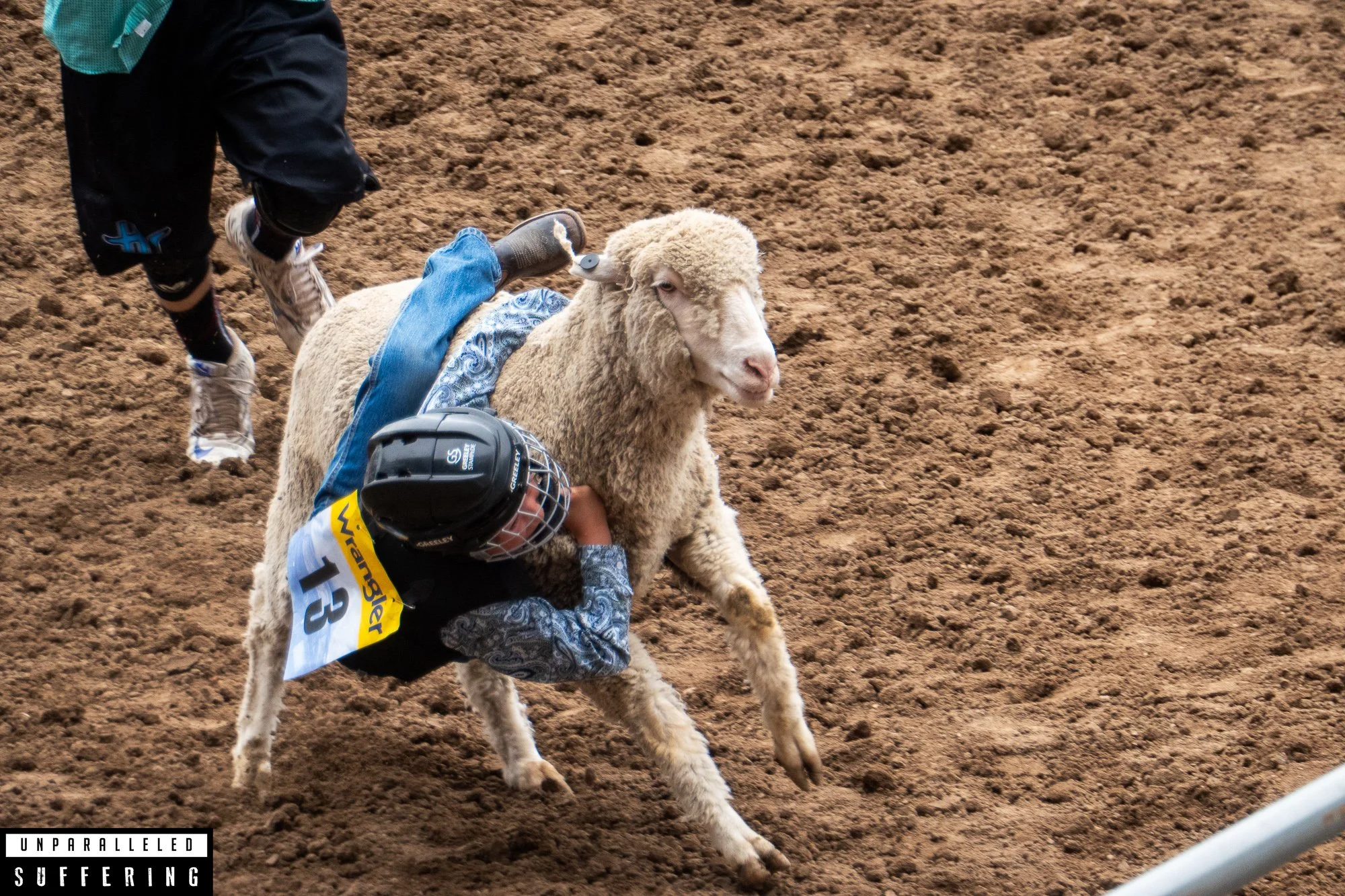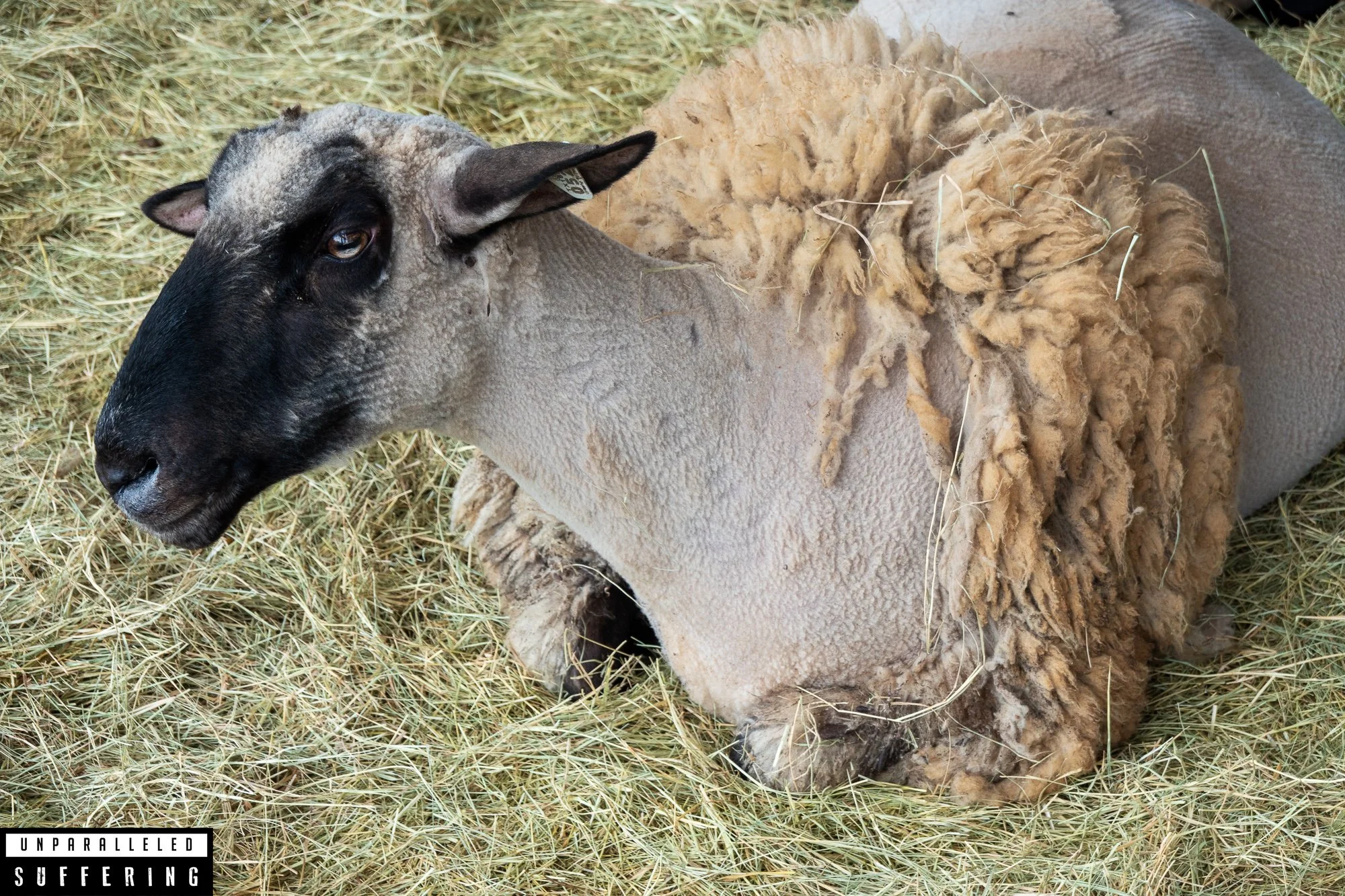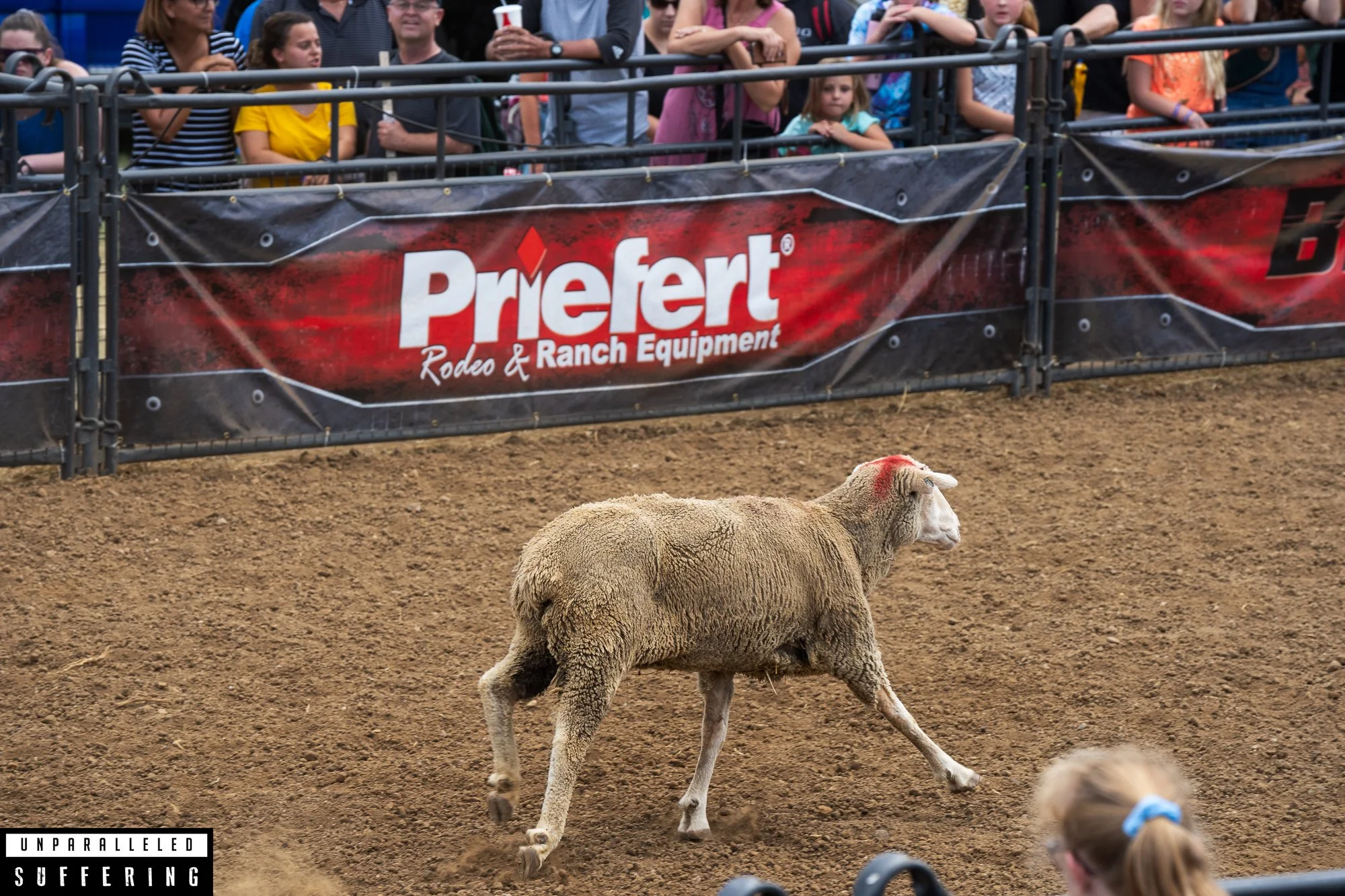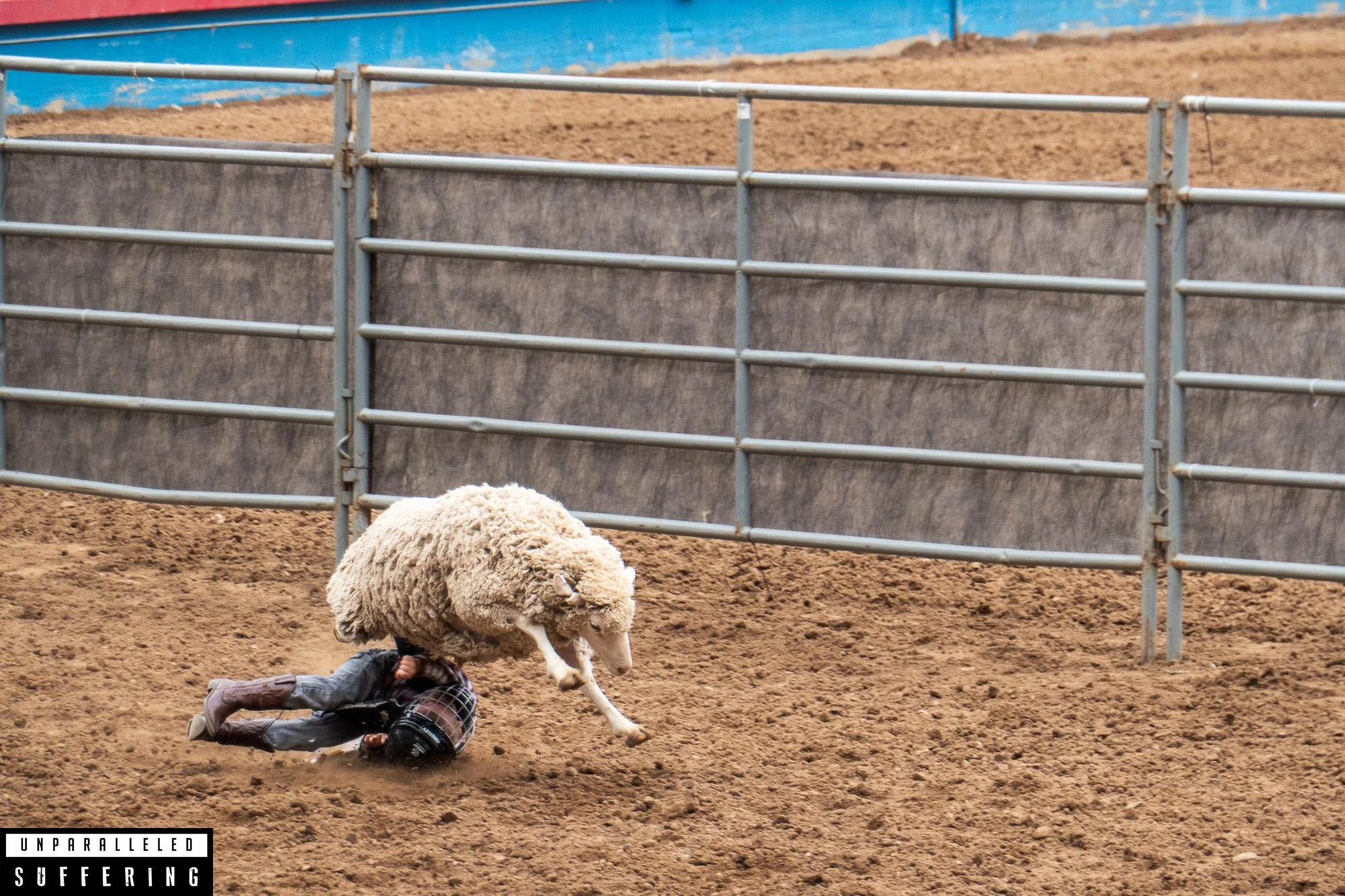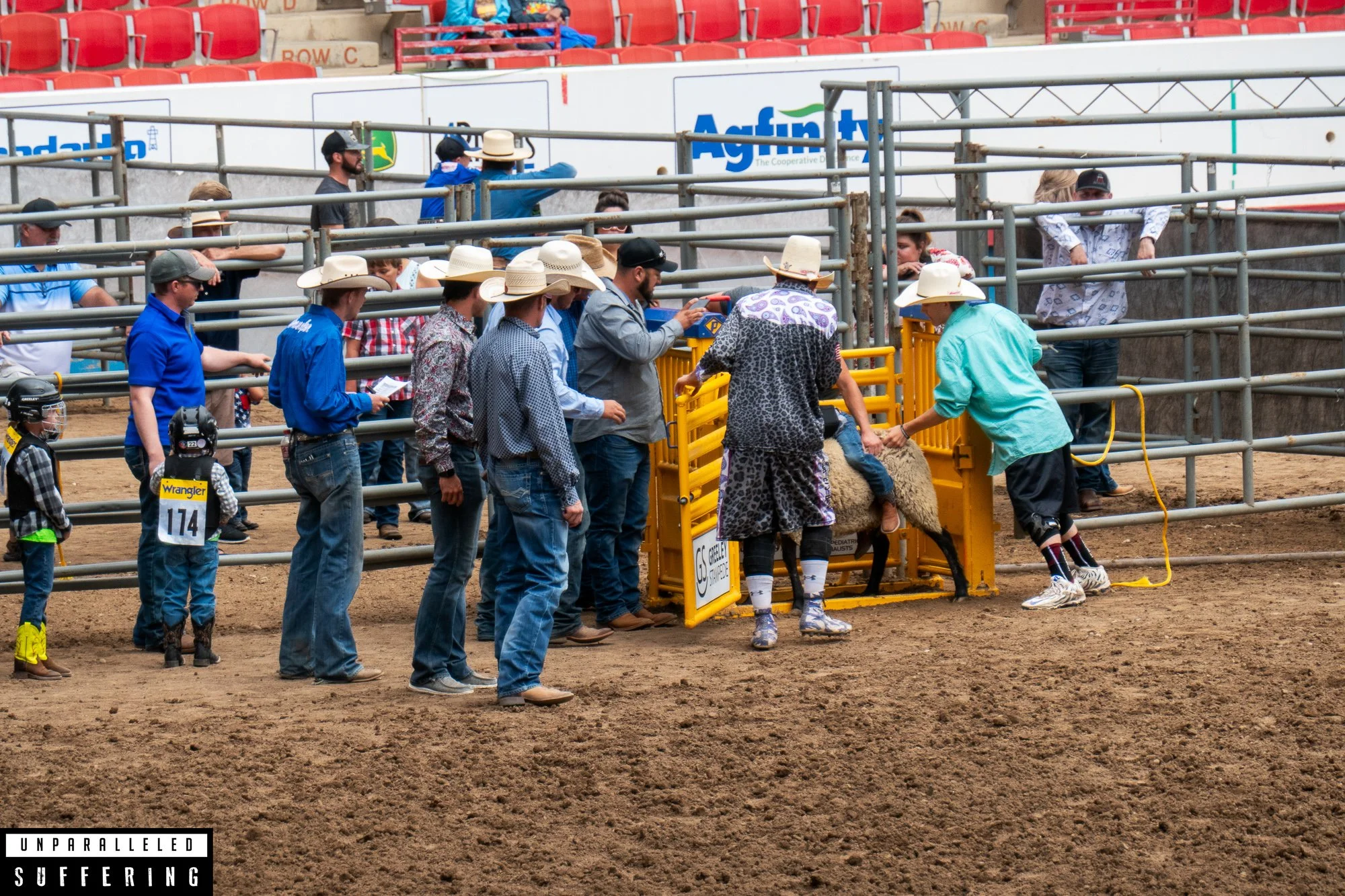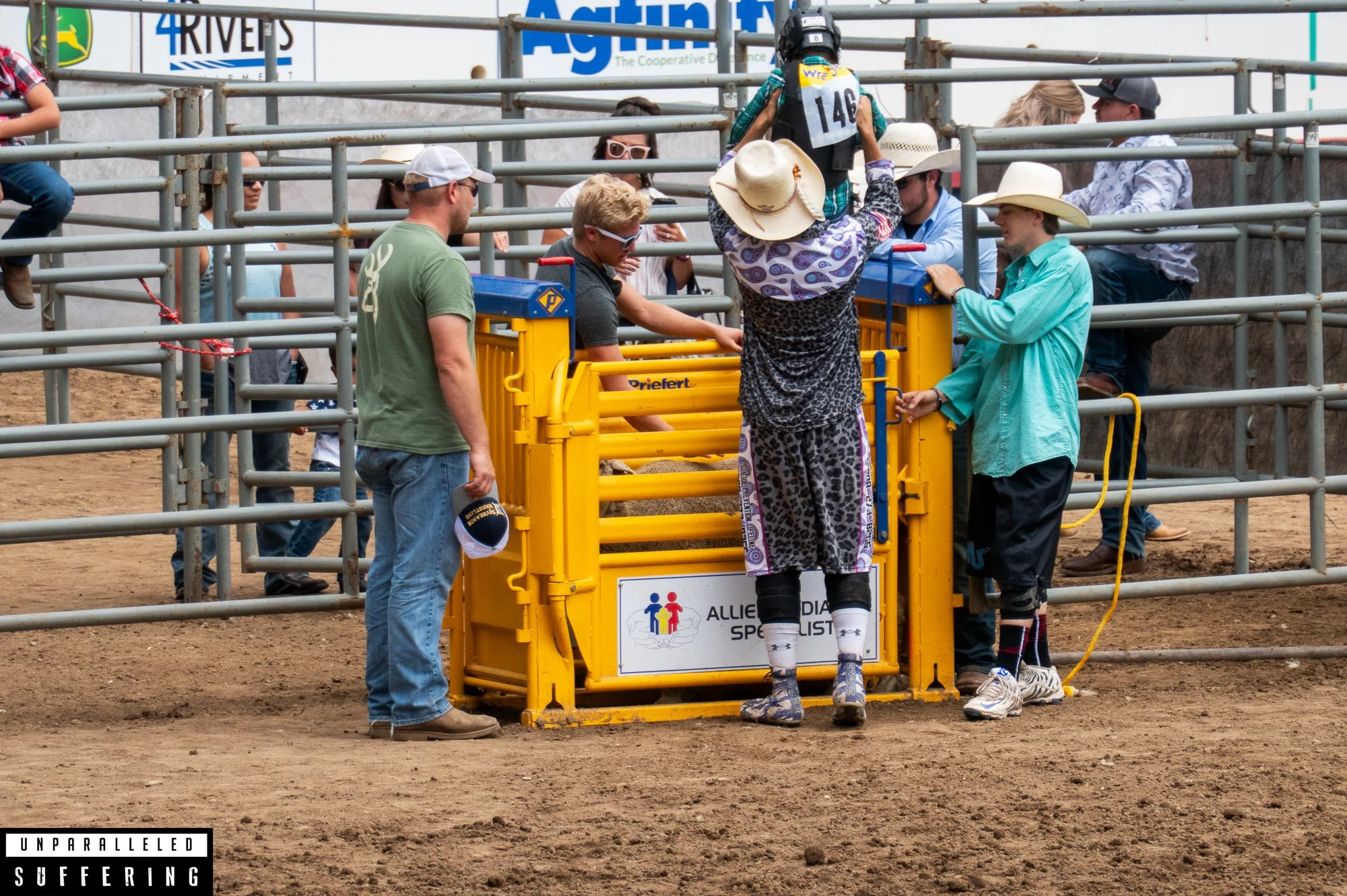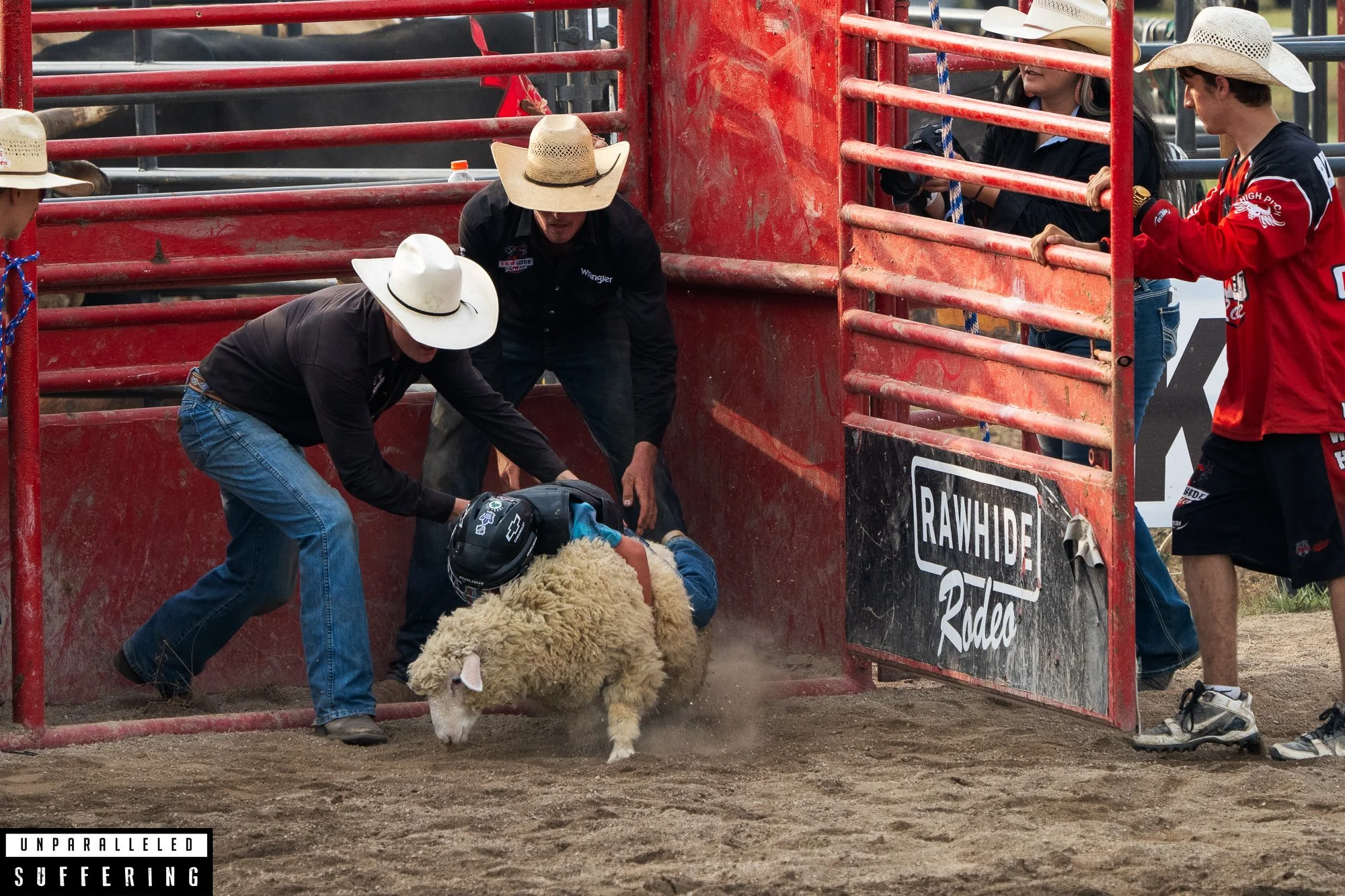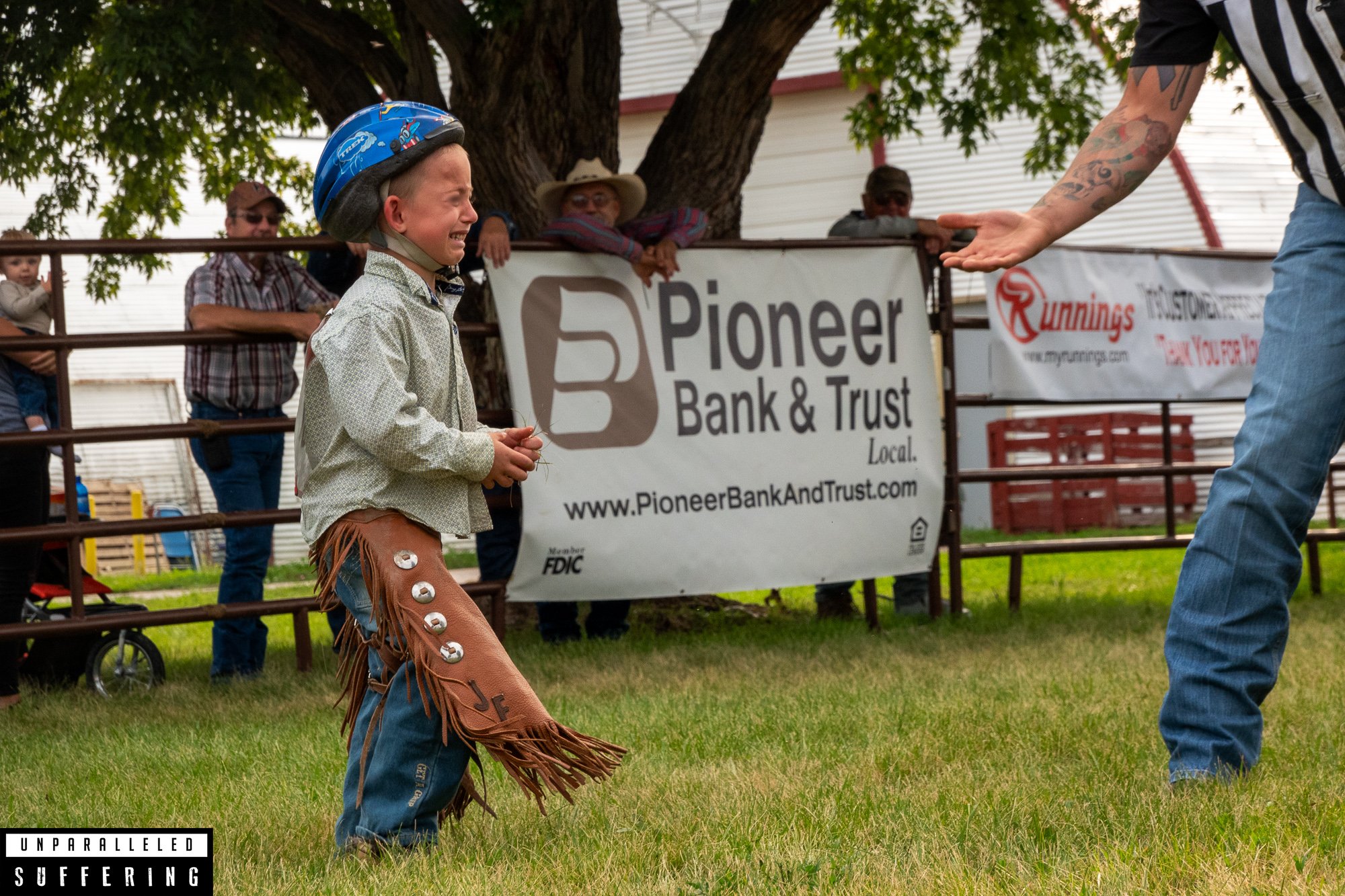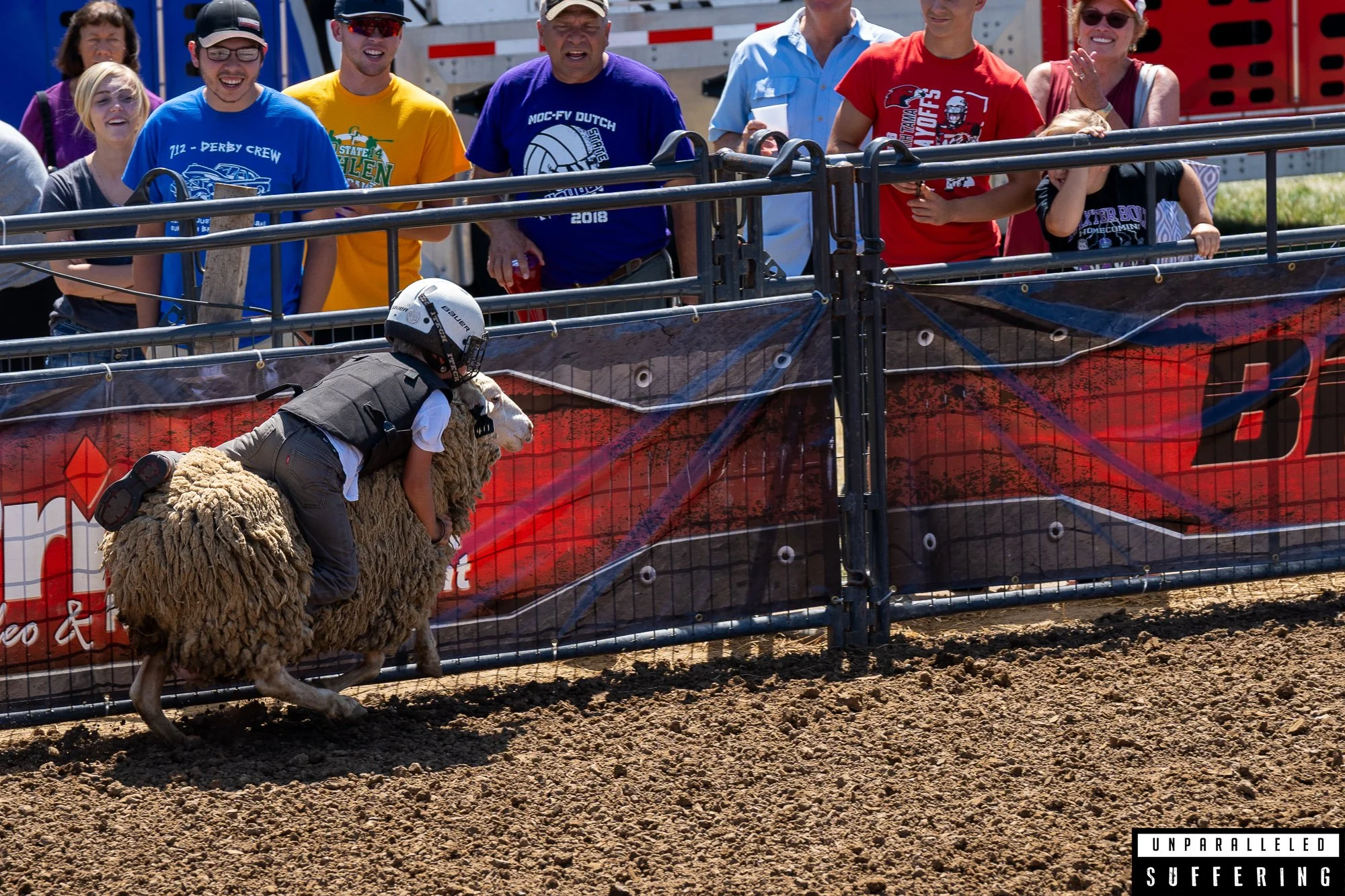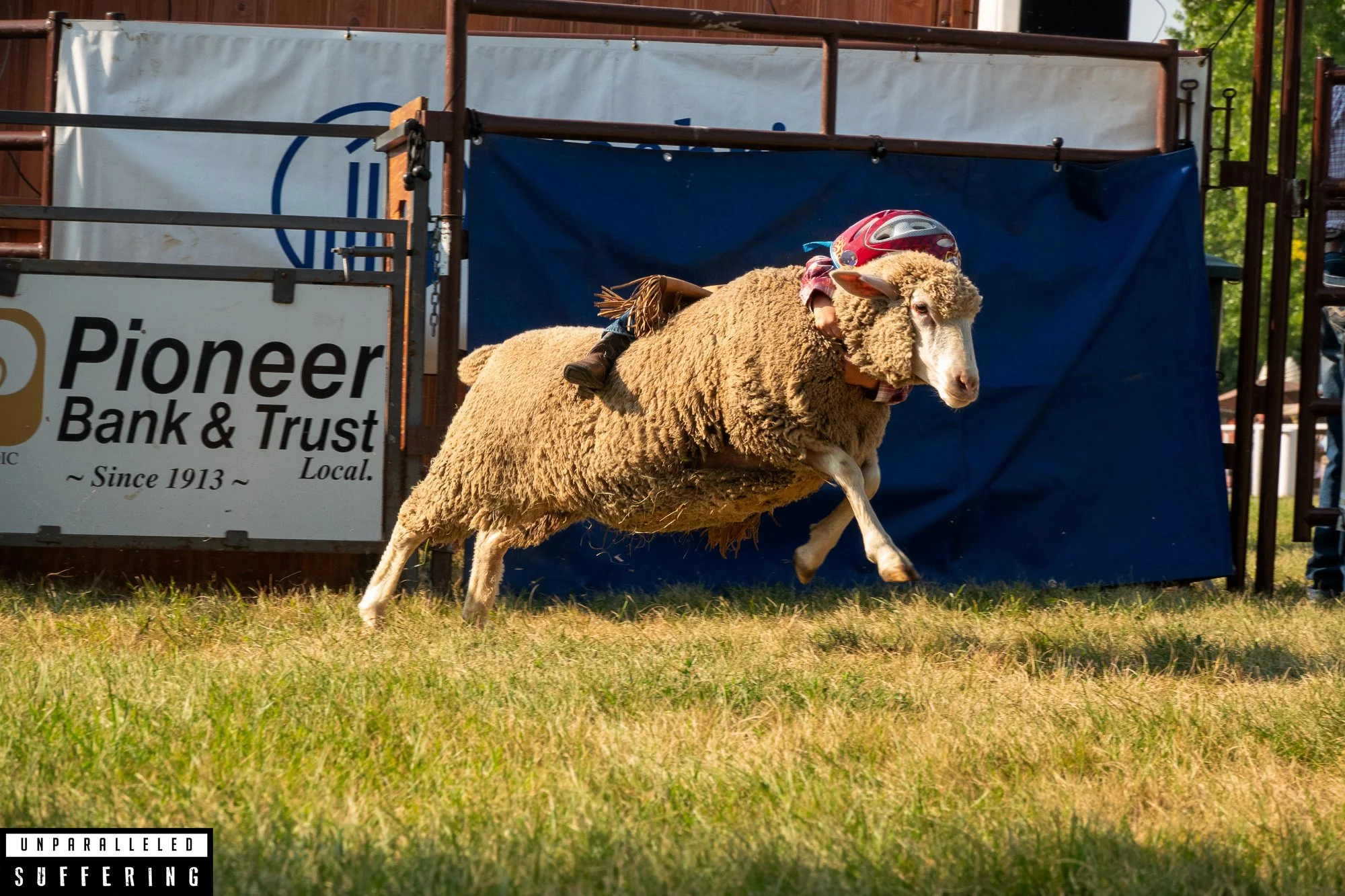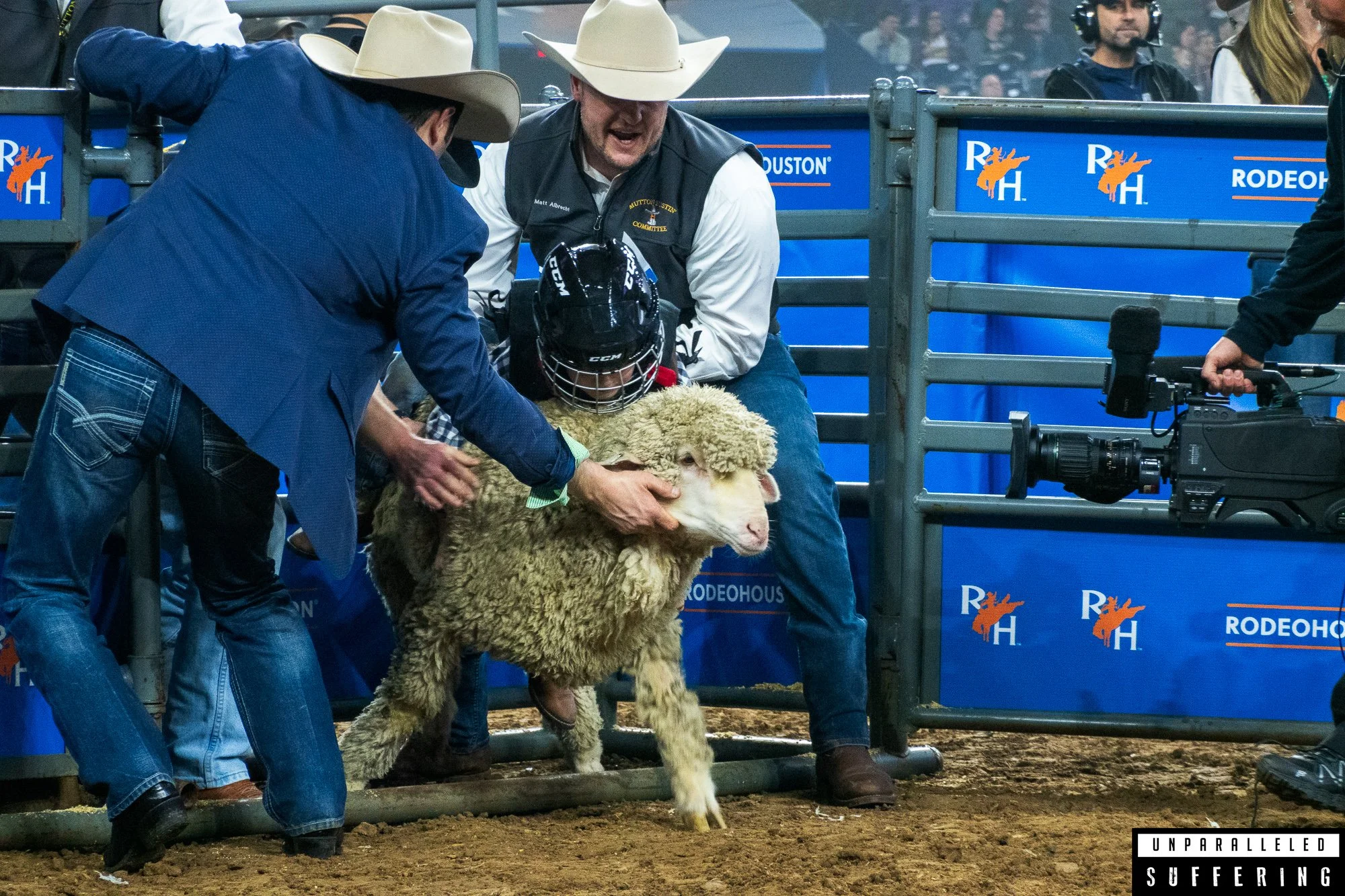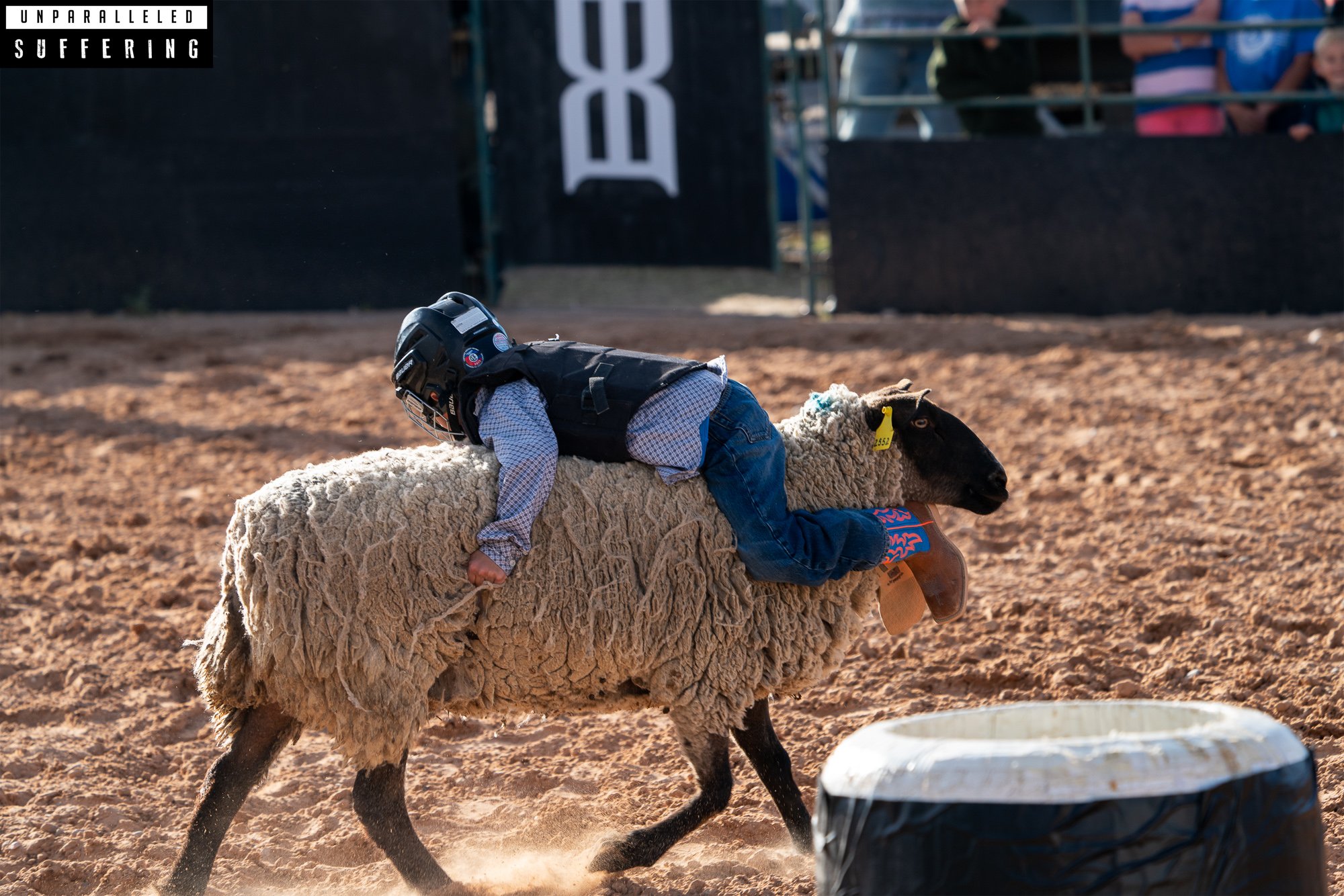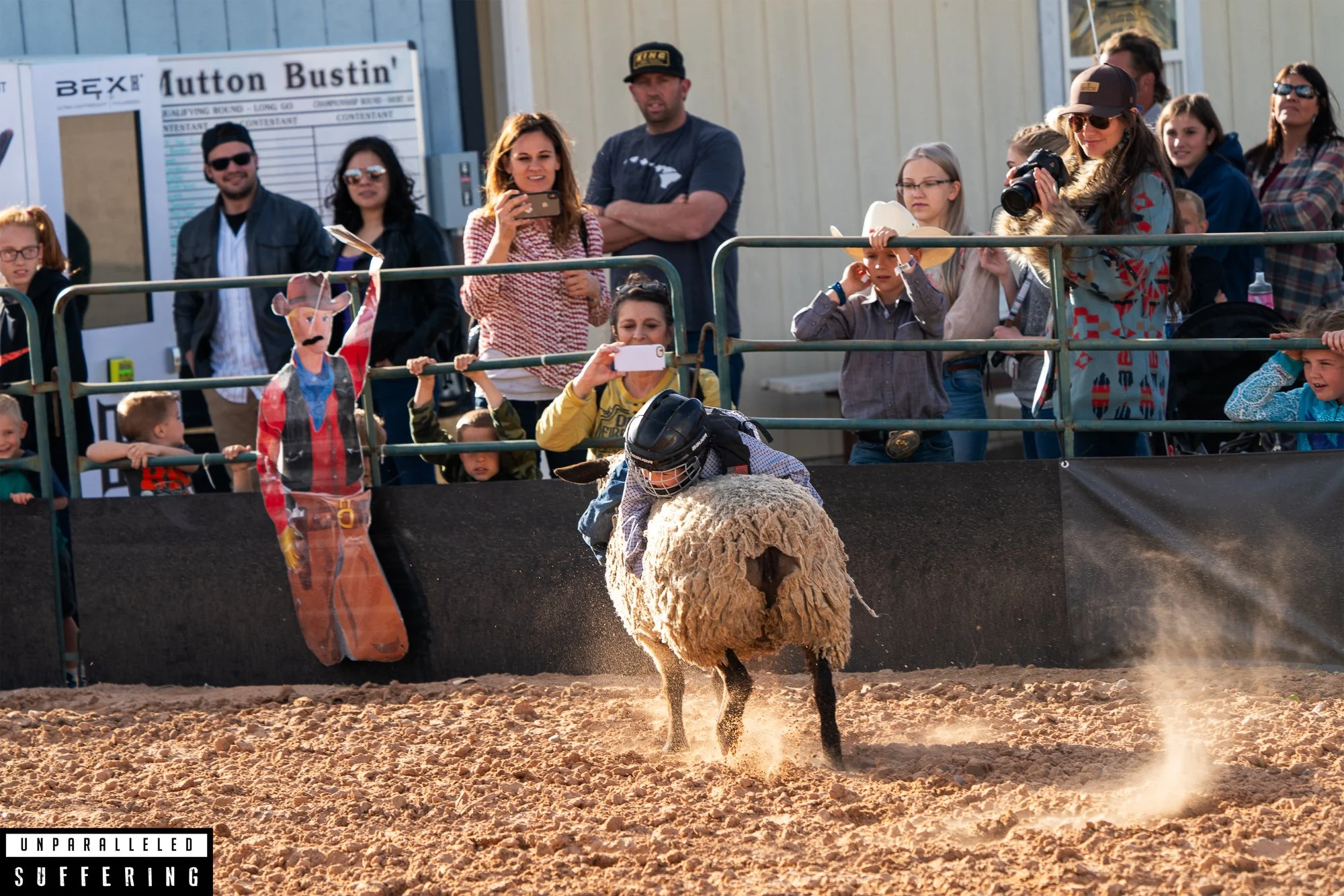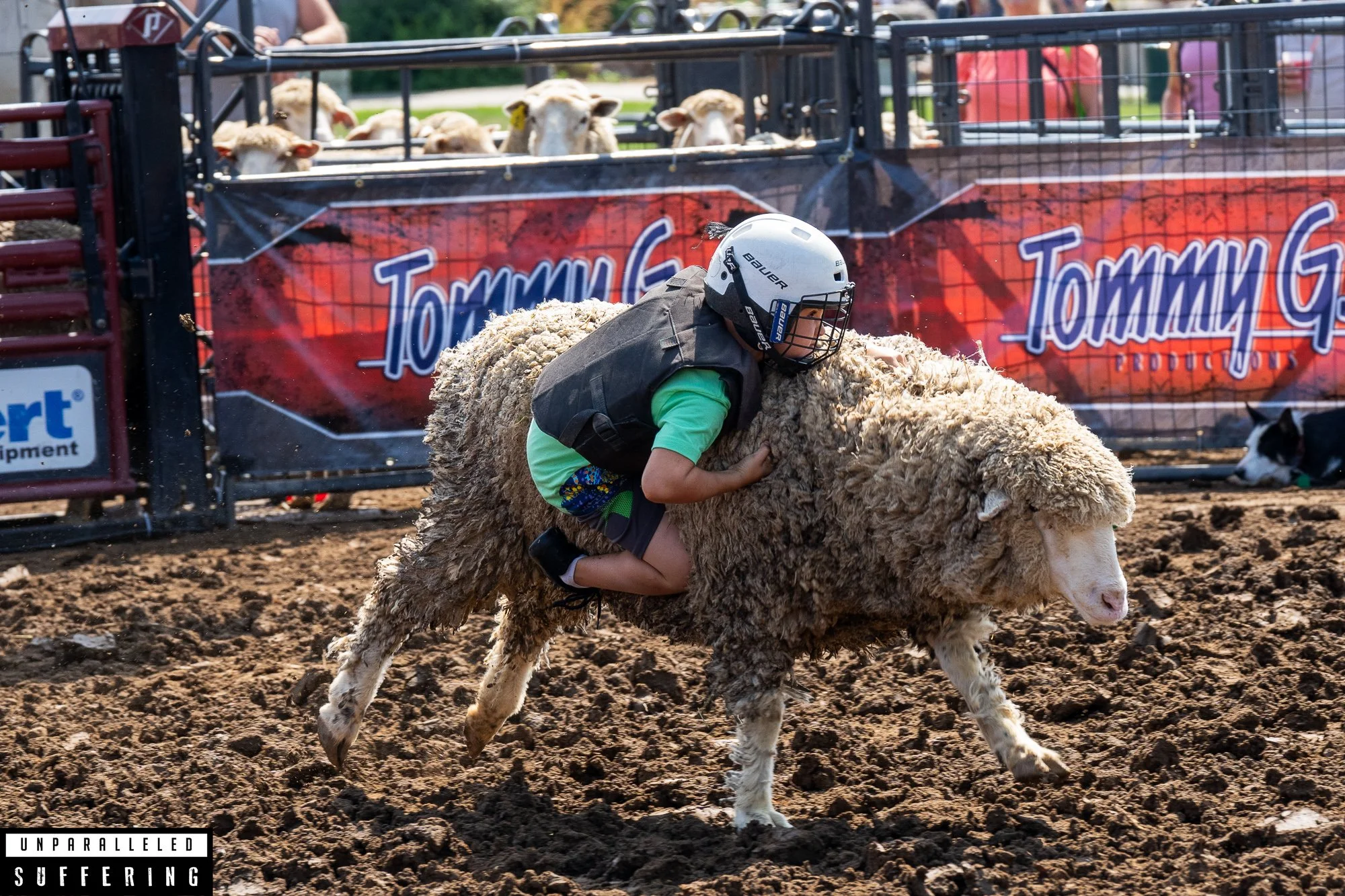Mutton Bustin
Mixing Children and sheep for entertainment
What is Mutton Bustin’?
Mutton Bustin' is an event for young children that involves riding on the backs of sheep for as long as possible and is held most commonly at rodeos and fairs. At rodeos mutton bustin' is often held before the adult events take place and at fairs it takes place throughout the day at different time slots. Most mutton bustin' events are limited to children from 4 to 7 years of age, but some events allow children as young as 3 to participate. The weight limit is 55 pounds at most events, but some events allow children up to 70 pounds. Participants are given protective vests and helmets, but injuries can still occur. The children are rarely aware of the risks involved with doing this, such as the physical and/or emotional pain that may be a consequence, but the parents don't seem to mind. At every mutton bustin' event documented by Unparalleled Suffering there were children who were crying and who needed help getting up off the ground.
Sheep are restrained and held still by handlers in a small chute or sometimes outside of a chute. An adult places the child on top of the sheep and the child holds on tight with their arms and legs. Some mutton bustin' sheep have ropes around them for easier handling and sometimes sheep are sheared in such a way that it makes handling them easier. When the child is ready the sheep is released from the chute into the arena or from being held in place in the arena already. The sheep will dart out (unless they collapse) and simultaneously try to get the child off of them. They run towards where a single sheep or a group of sheep are standing.
Whichever child is able to hang onto a sheep by any means for the longest time possible is the winner. Belt buckles and other prizes are given out. Most mutton bustin' events give all children a prize, whether it's a ribbon or something else.
Sheep used for mutton bustin' are densely packed together just like when they are transported to and in holding at slaughterhouses. Sometimes the sheep are already visibly marked for slaughter with a large "X" painted on their head or another part of their body. The sheep are all treated cruelly by the children, whether intentional or unintentional. Just like the children sometimes have a tough time getting up, so do some of the sheep after they've fallen down. In some cases the sheep are never able to stand back up again and will get shipped to a slaughterhouse as a downer animal.
The crowd can easily see that this pointless event causes lots of pain to the willing and unwilling participants alike, but they still smile, cheer, applaud, and continue to attend.
